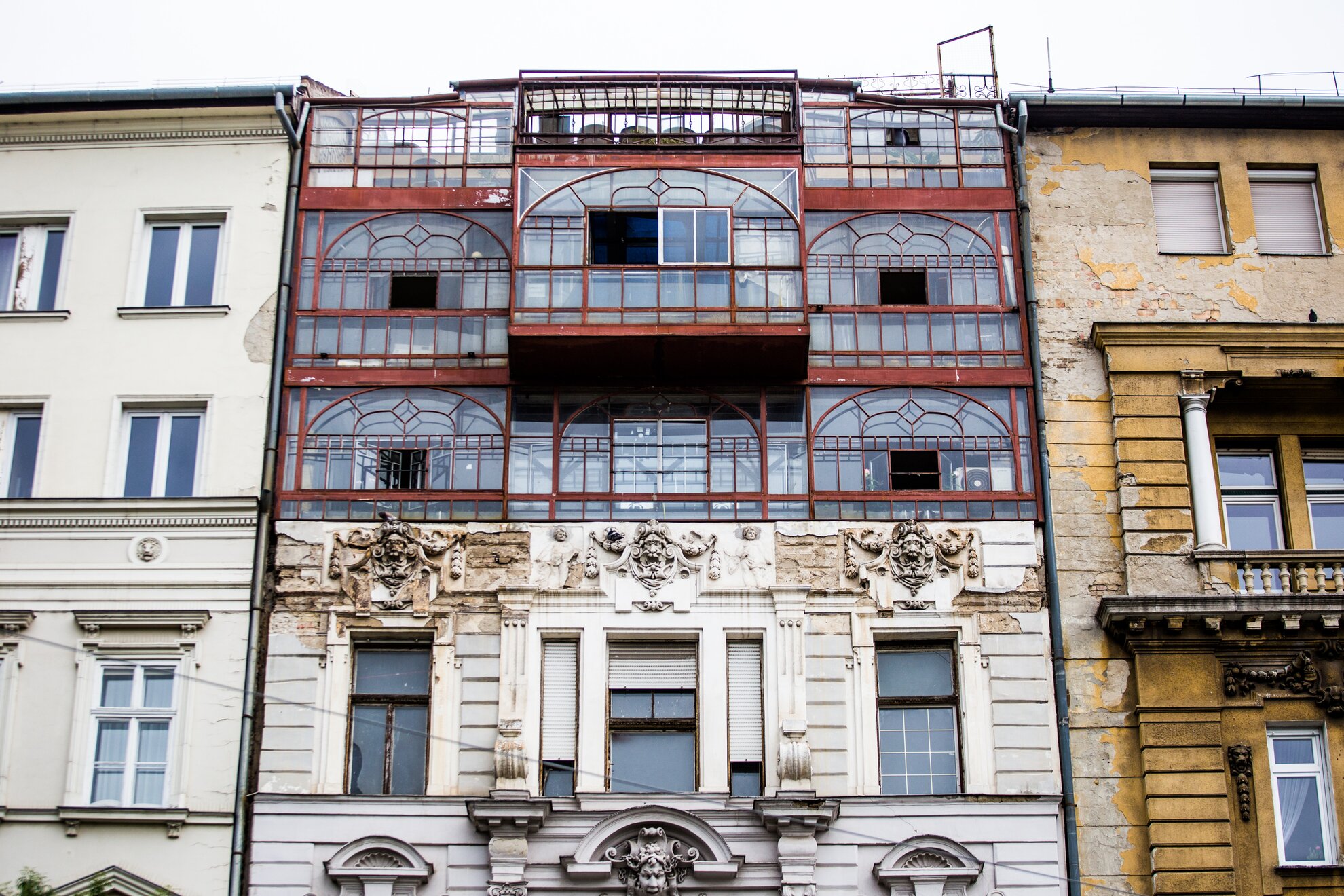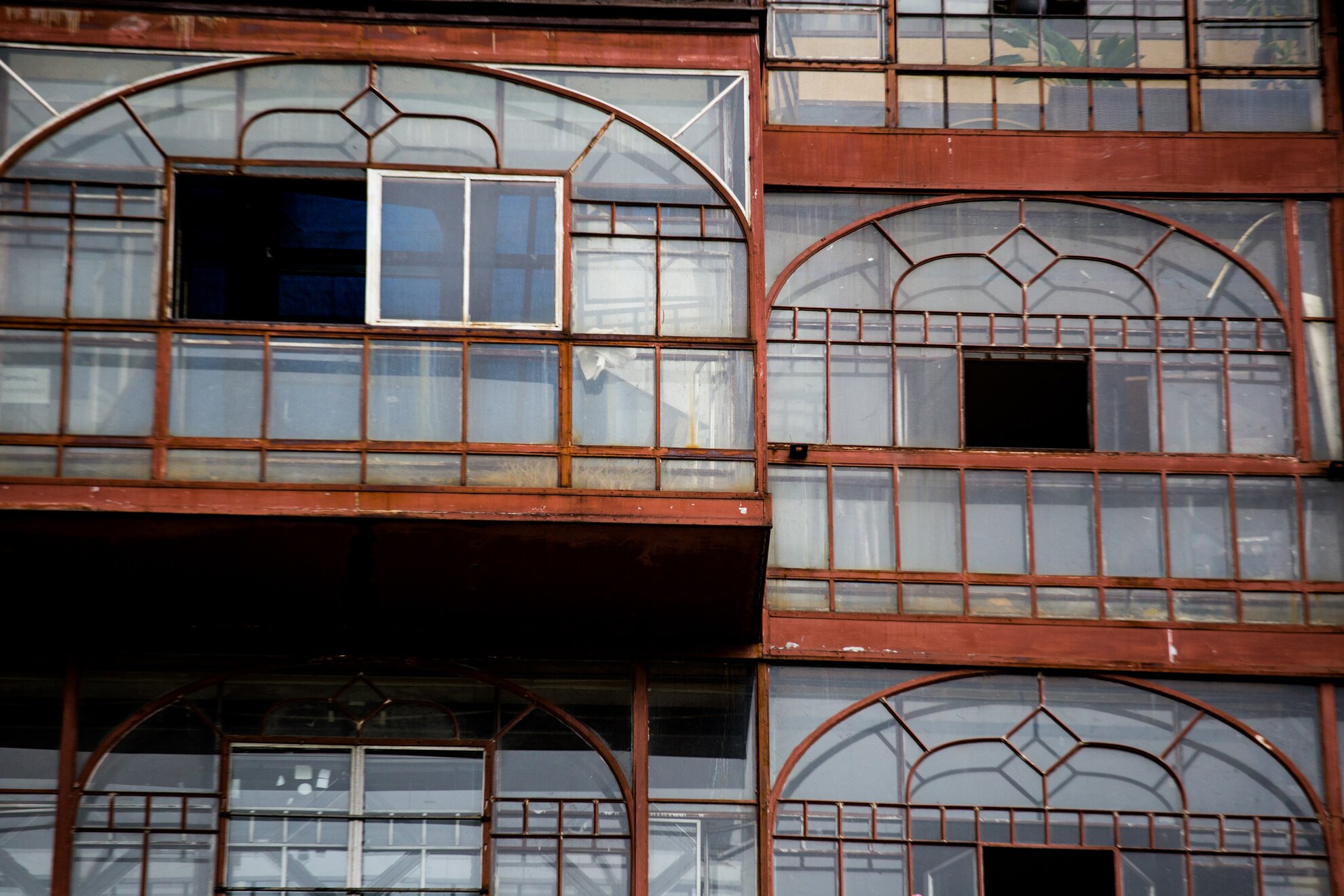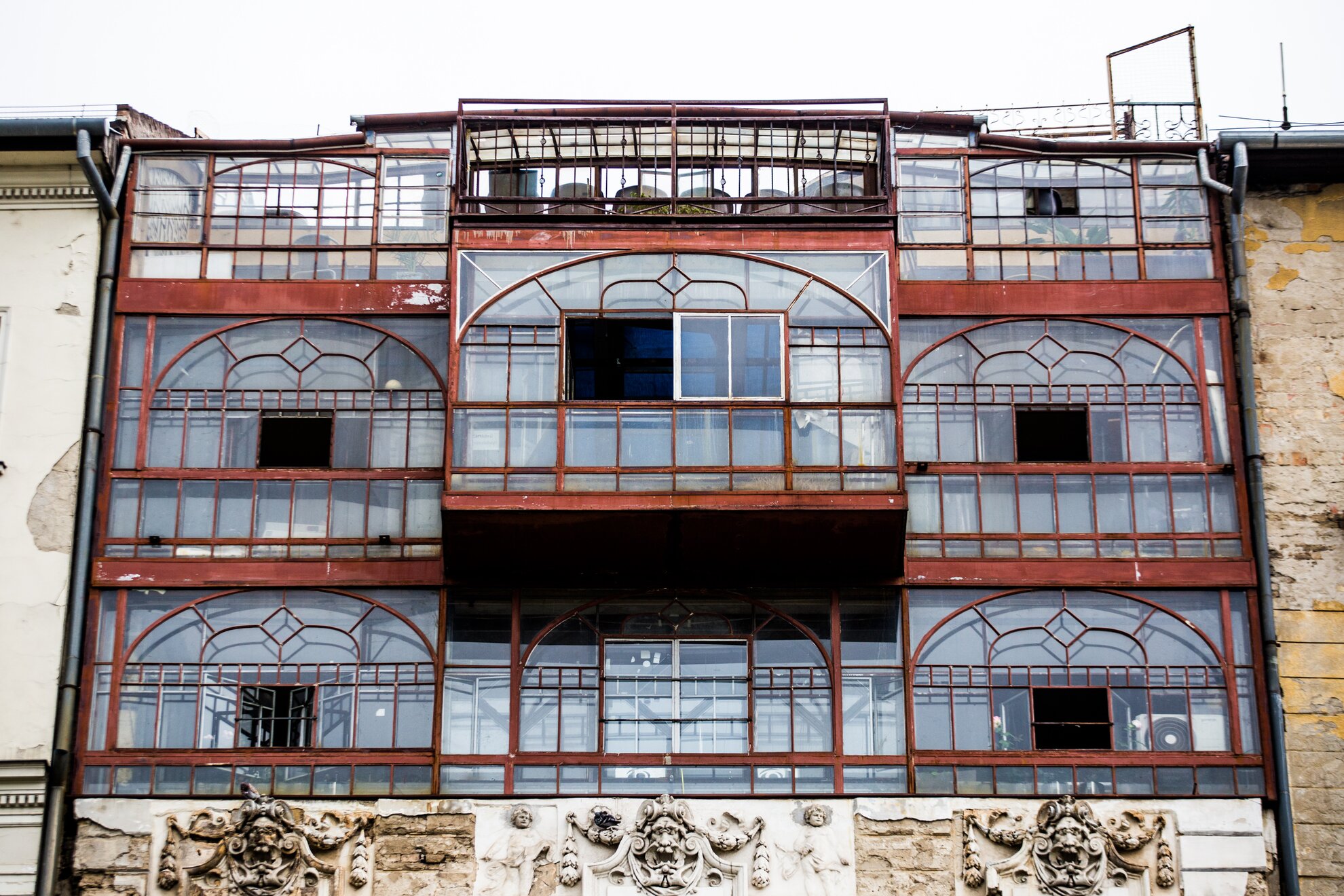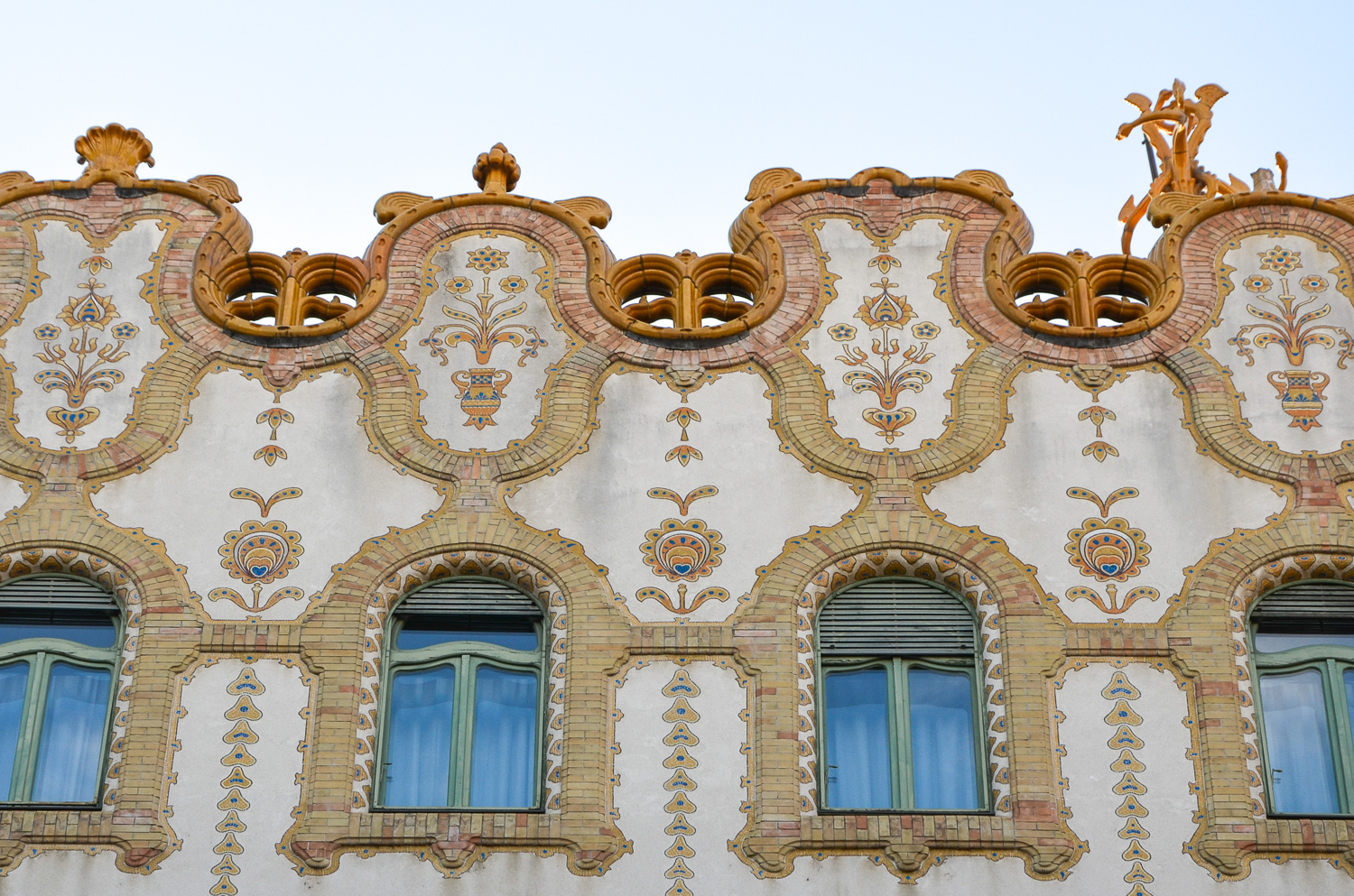Tárnok utca 14
One of the most colourful façades can be found in the Castle District, built around 1520 and painted with lovely geometric shapes. The whole frontage was restored in the early 1950s by István Czagány and József Csemegi. In fact, this unique façade was hidden behind layers of plaster and completely forgotten about, only discovered after the building was damaged during World War II. This style of decoration was common for Renaissance Budapest, before being whitewashed over by the occupying Ottoman authorities.
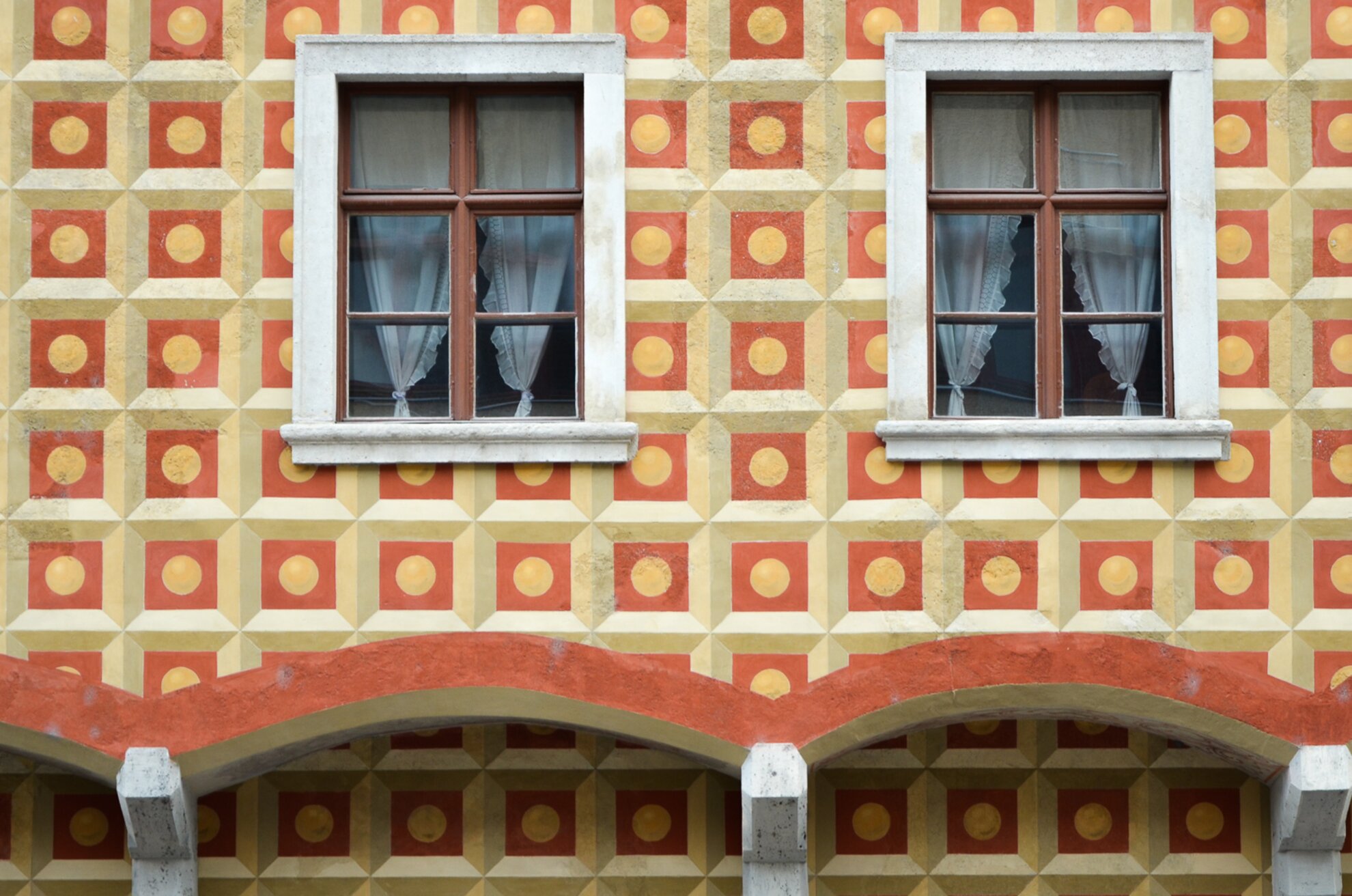
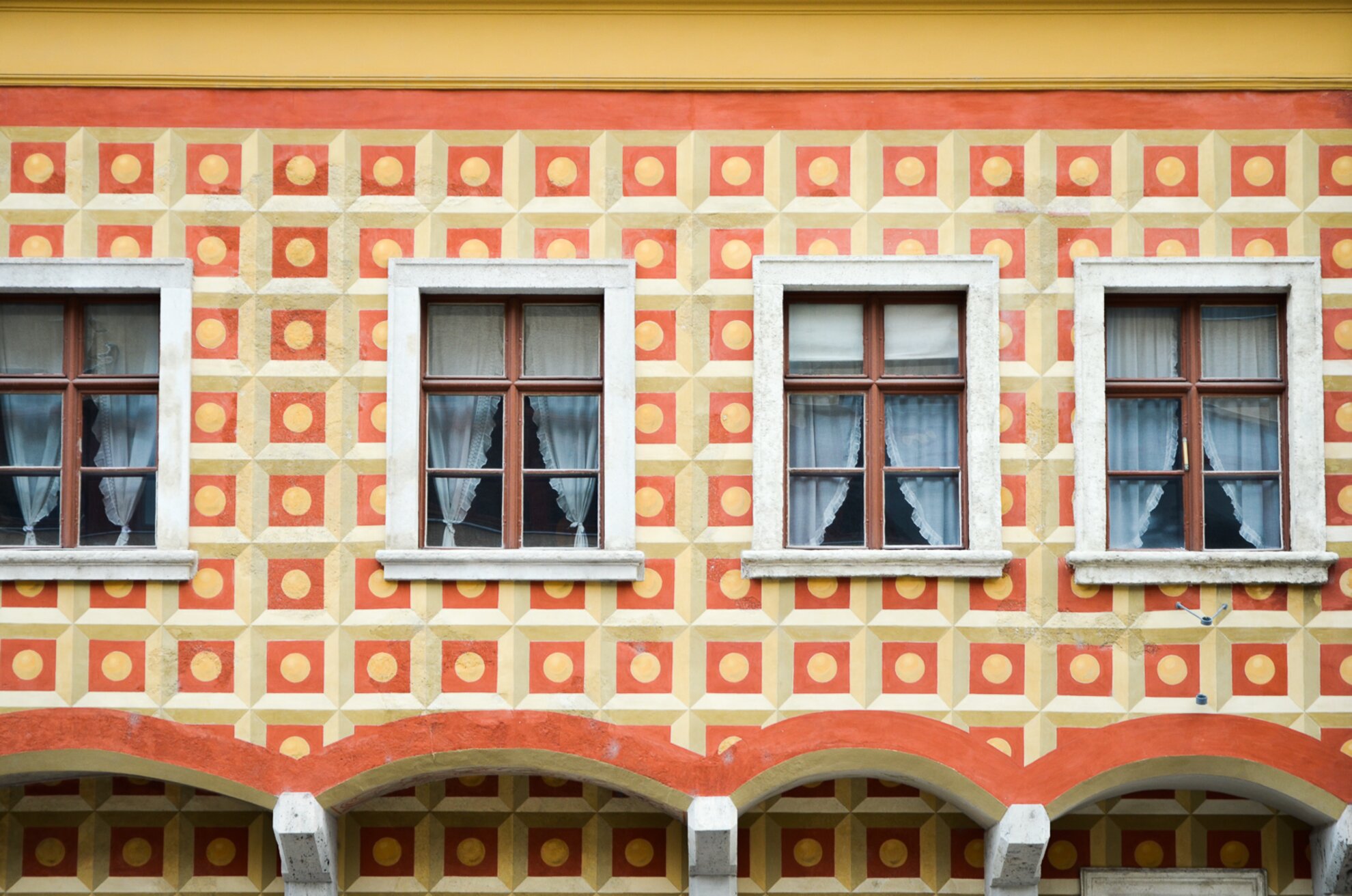
MÁV bérpalota, Andrássy út 88-90
Kodály körönd is one of the most unique places in the city, with ornate façades so intricate in detail they require several minutes of study to fully appreciate. Unfortunately, the buildings here are also in need of restoration, and work has begun to this end.
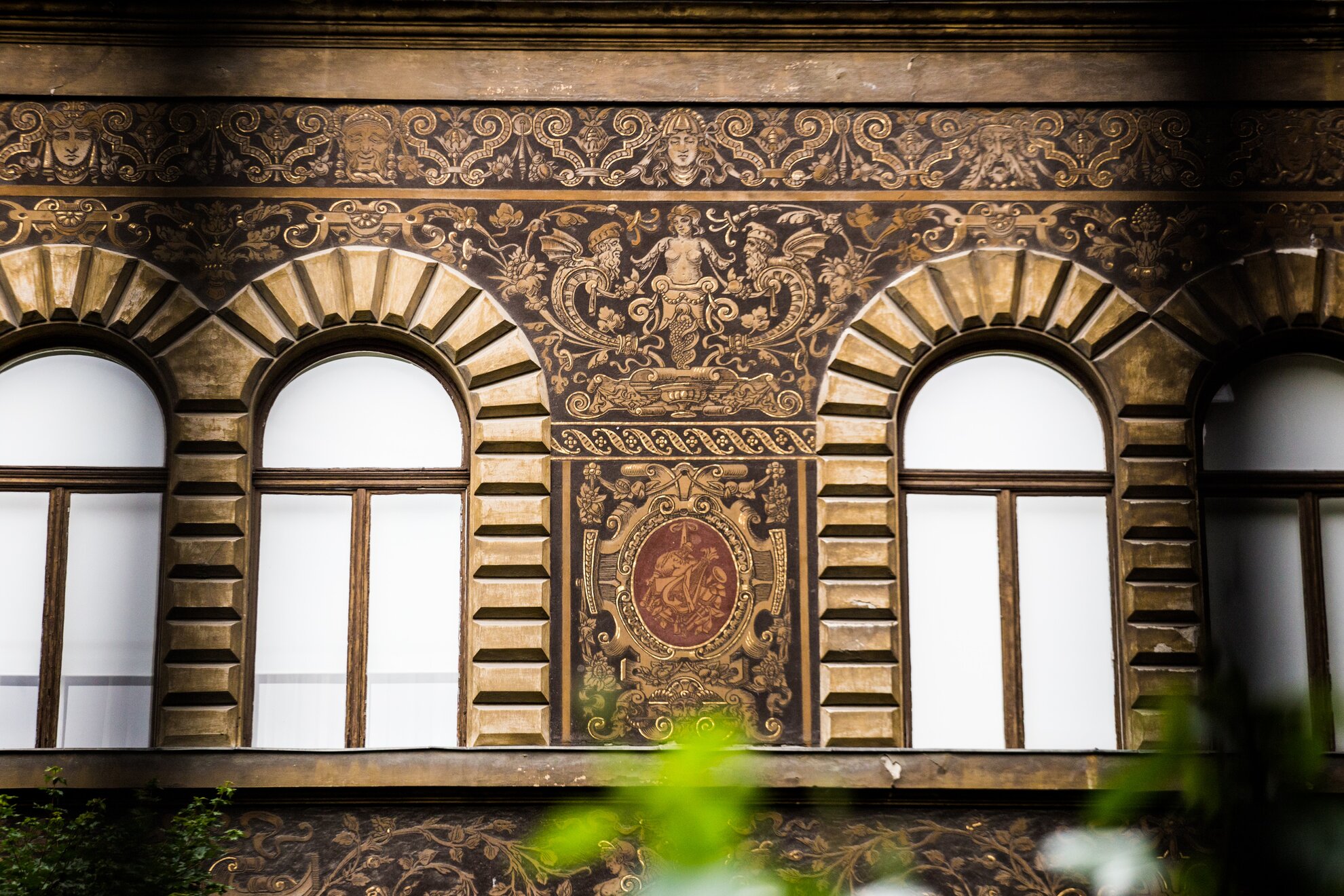
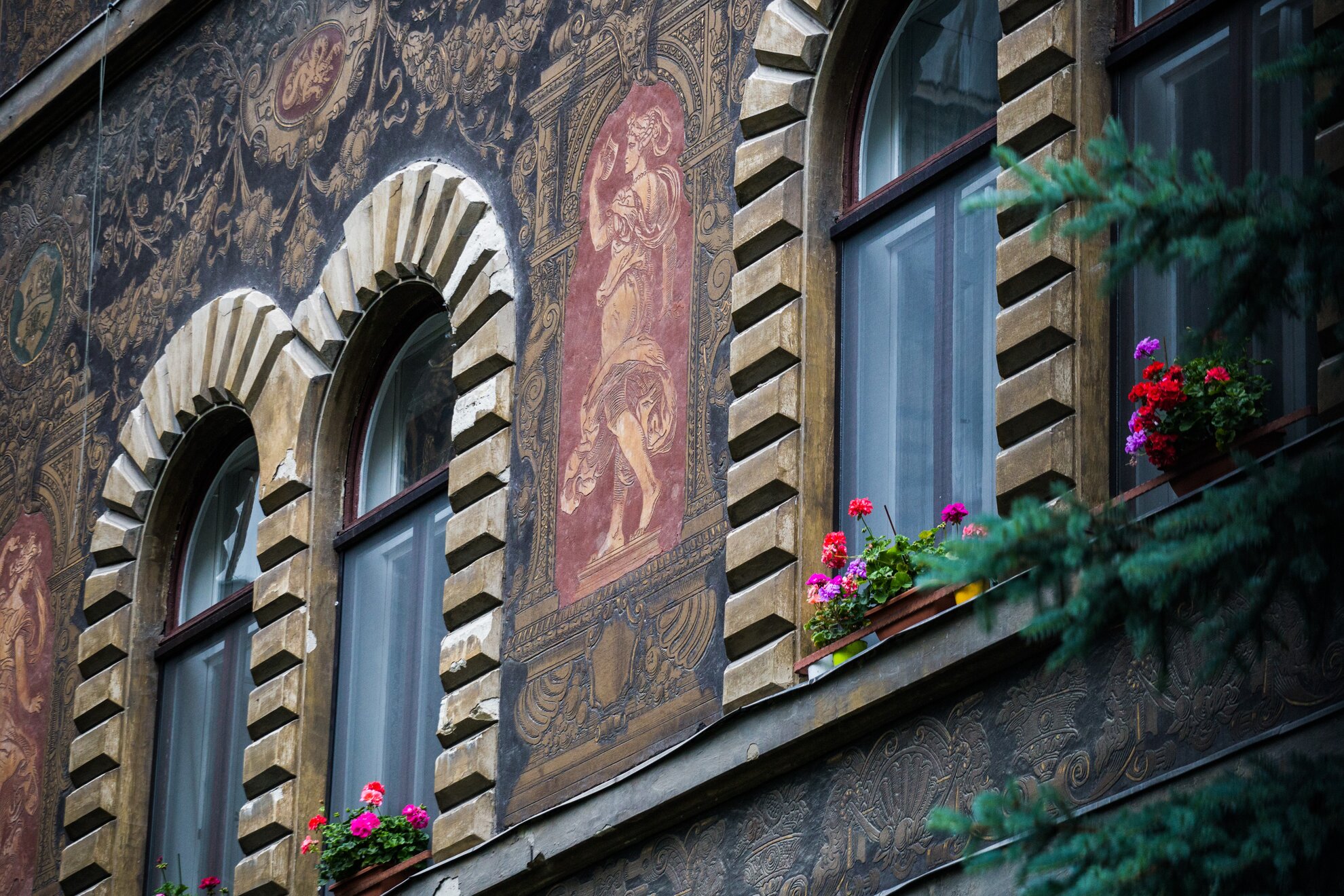
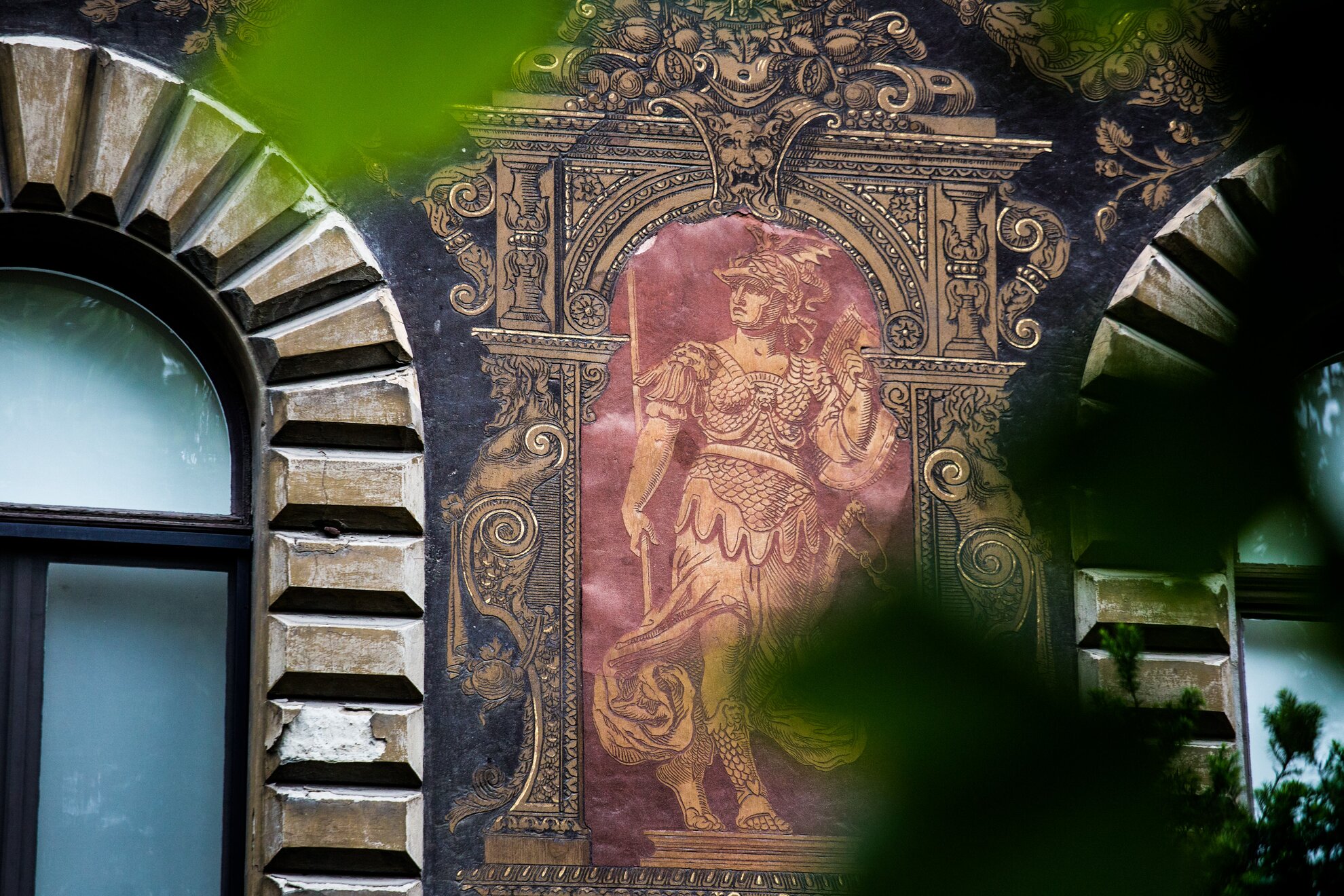
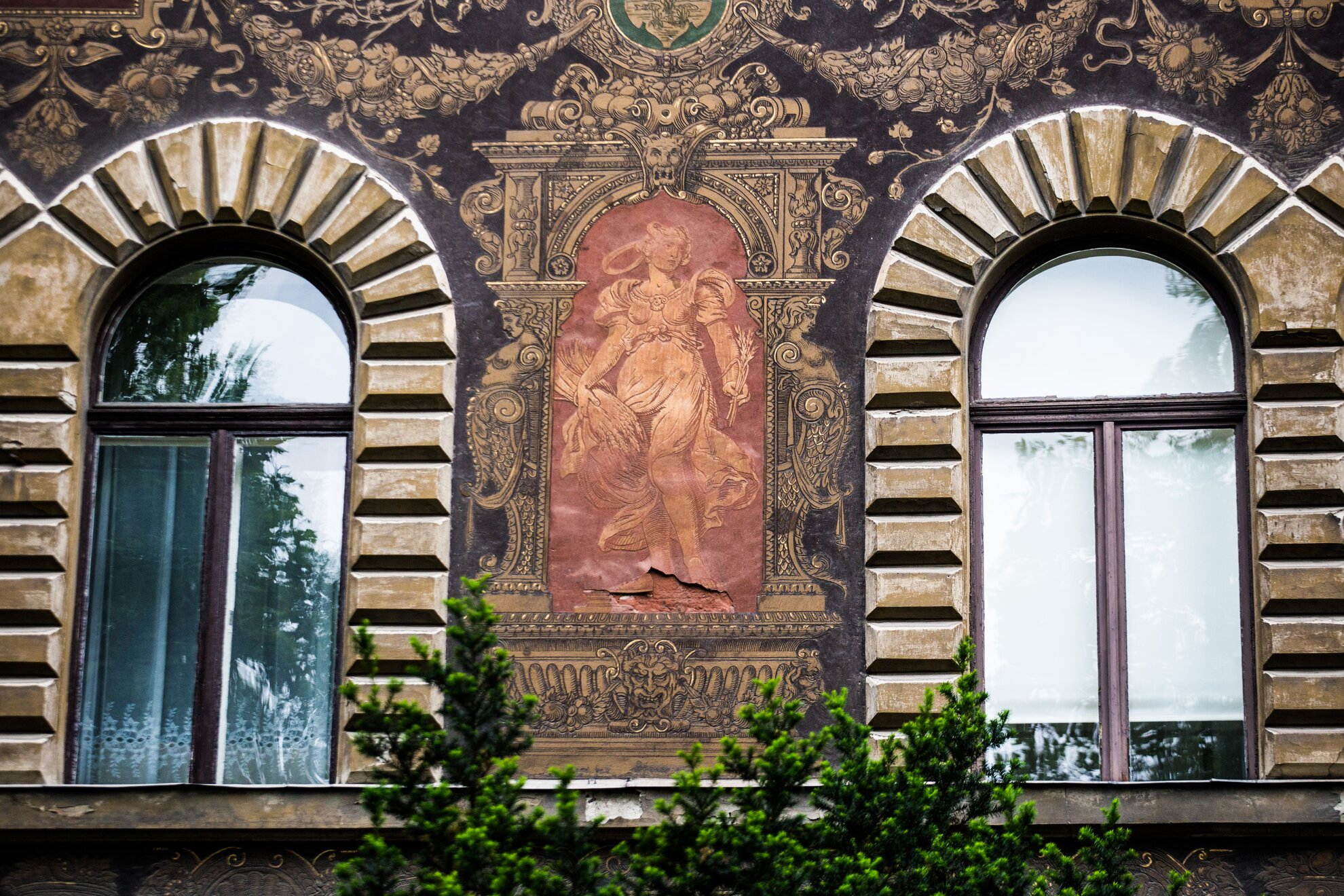
One of the most impressive buildings here is the house built in 1880-81 by Gustav Petschader, a former tenement house of the MÁV pension institution. Built in Neo-Renaissance style, the building lends a feel of Italian grandeur to Andrássy út. The flowing façade work was carried out by artist Bertalan Székely.
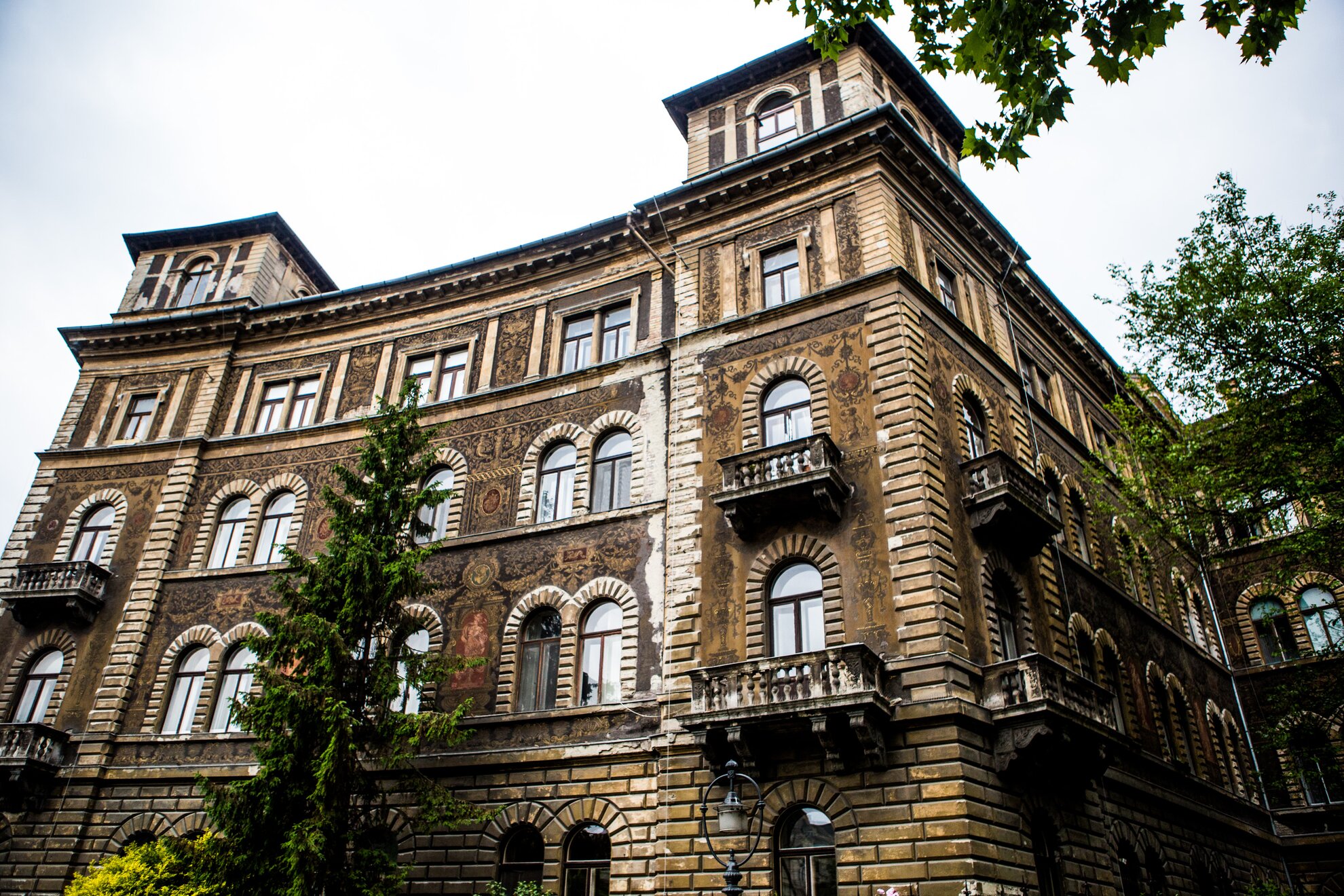
Párisi udvar, Petőfi Sándor utca 2-4
Unparalleled in its kind, the former Downtown Savings Bank on Ferenciek tere is a masterpiece of Moorish-Byzantine style and features. The exterior is covered in hundreds of thousands of ceramic tiles and ornaments, which have been restored to highlight their original glory.
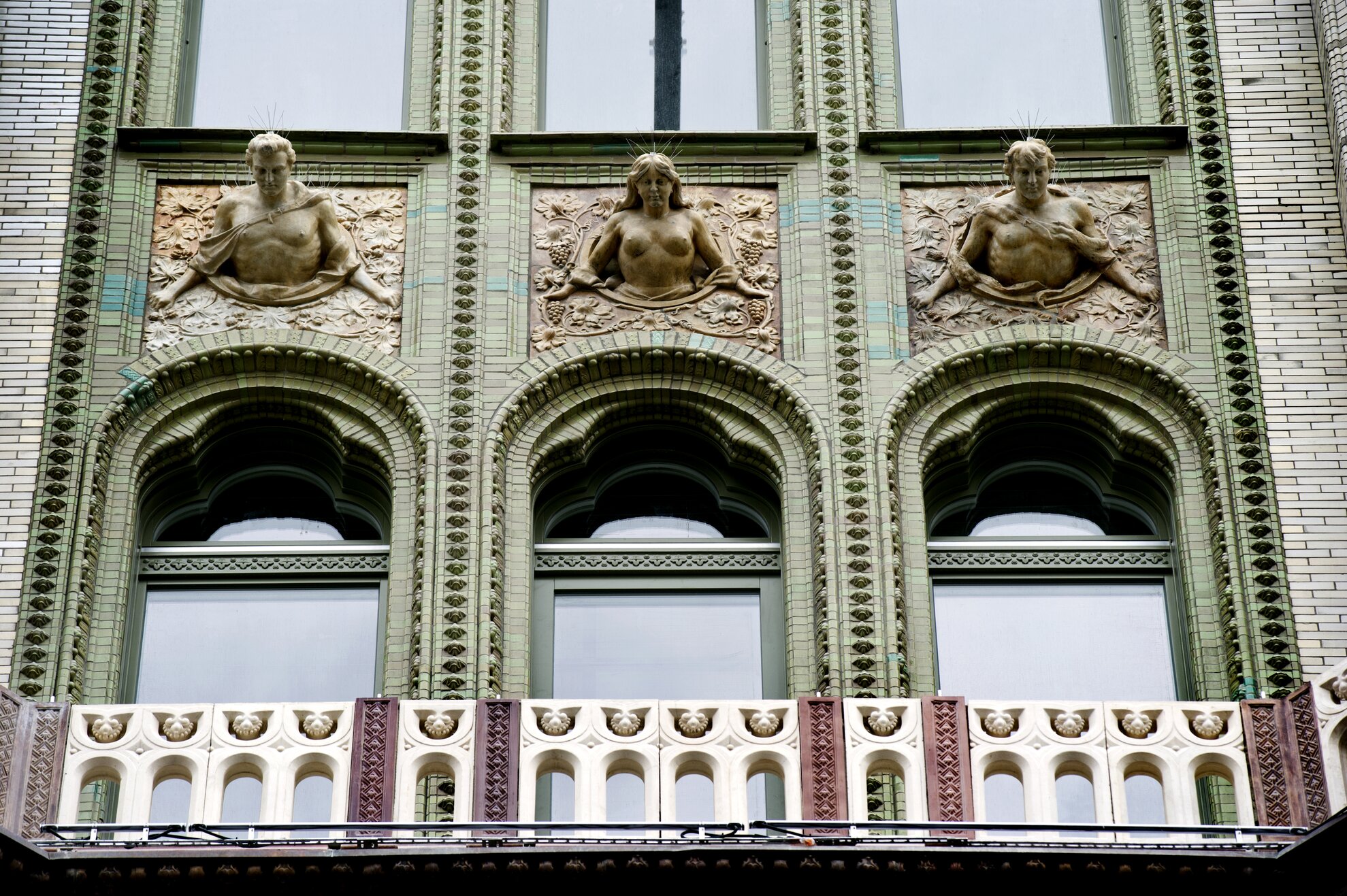

It is worth observing the façade in detail, not only admiring the creeping vines and peering male and female busts, but also the tiny beehives which can be spotted if you look closely. Bees – seen as diligent and hard-working – are common decorations on financial institutions.


Károly körút 14
Take a moment when walking down busy Károly körút to look up at No.14. The windows, framed by mosaics from Miksa Róth's famed workshop, are some of the most beautiful in the city.
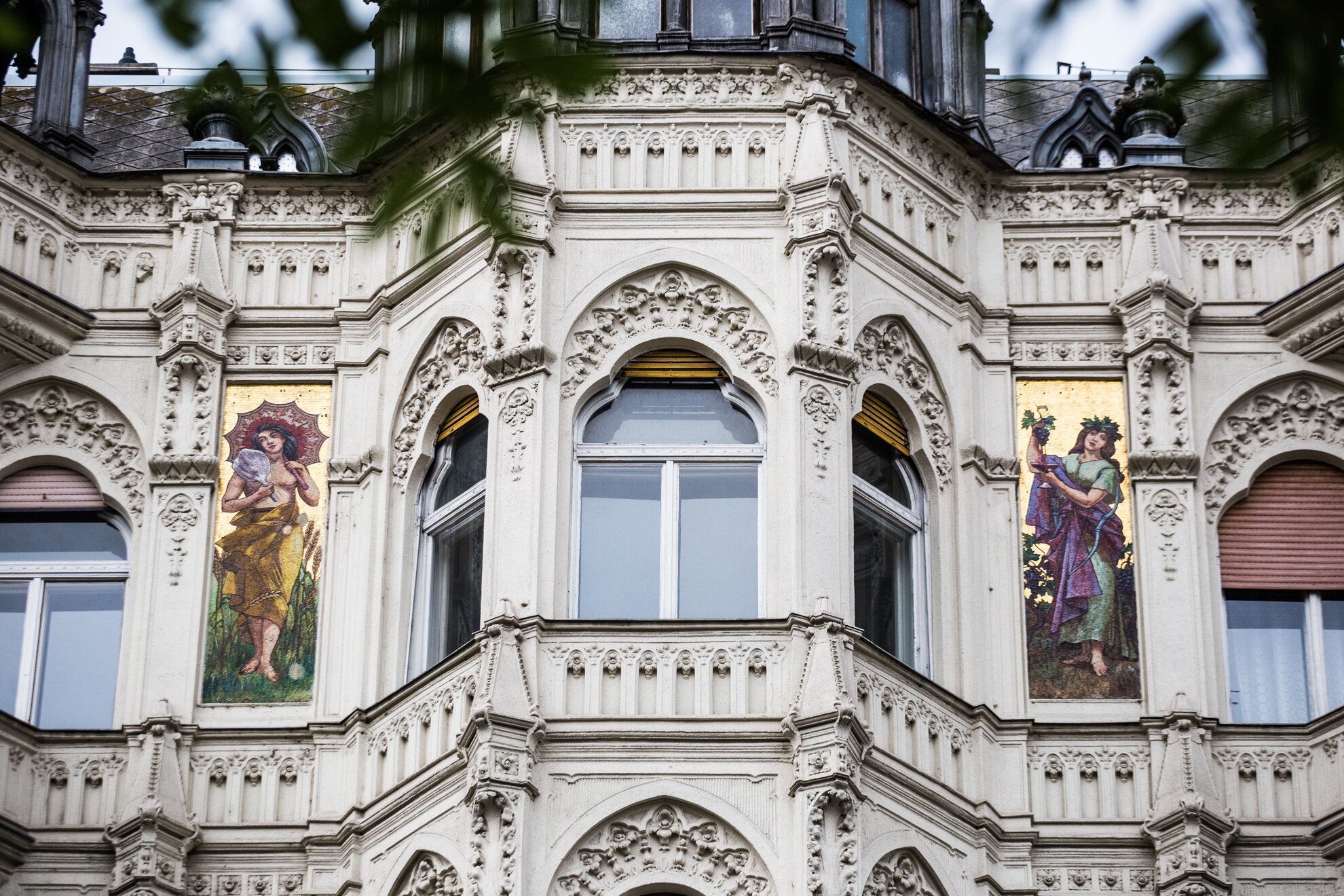
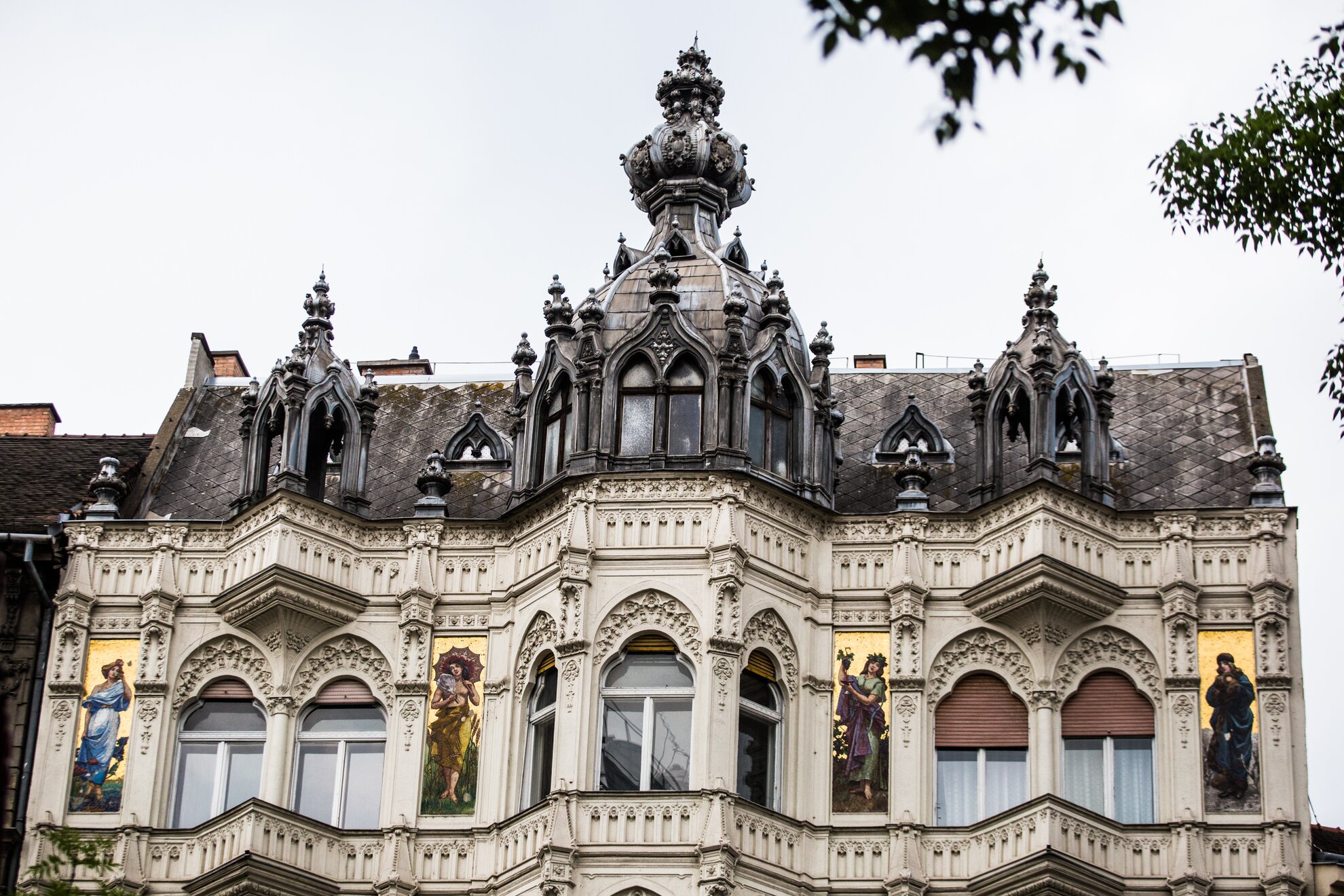
Lindenbaum houses, Izabella utca 94-96
The first Lindenbaum houses in the city, influenced by the Art Nouveau movement, were built in 1896-1897, according to the plans of Fülöp Weinréb and Frigyes Spiegel. On the left-hand side, recently renovated, you find every motif characteristic of Art Nouveau: snakes, peacocks, the sun and moon, and graceful nude female figures.
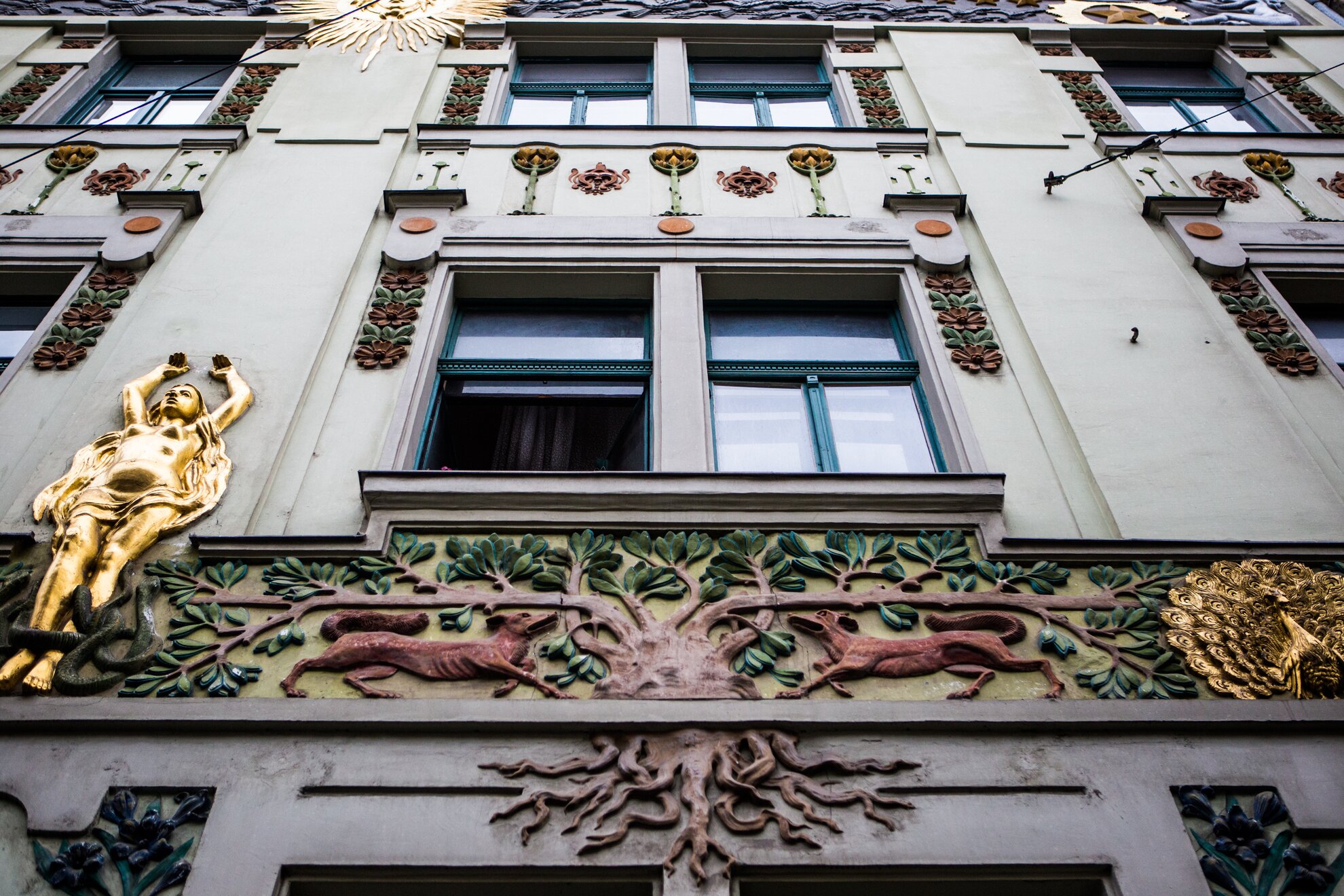
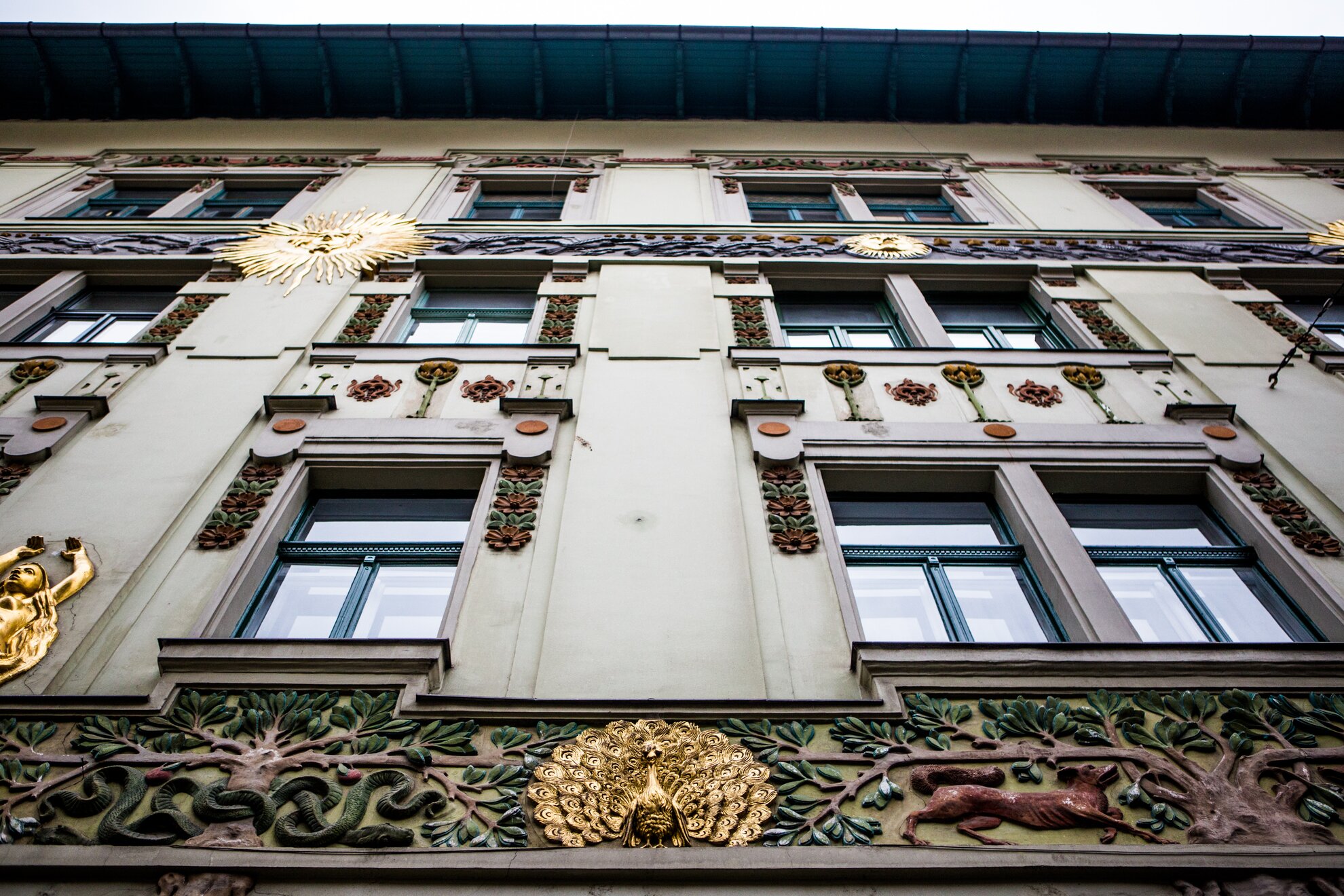
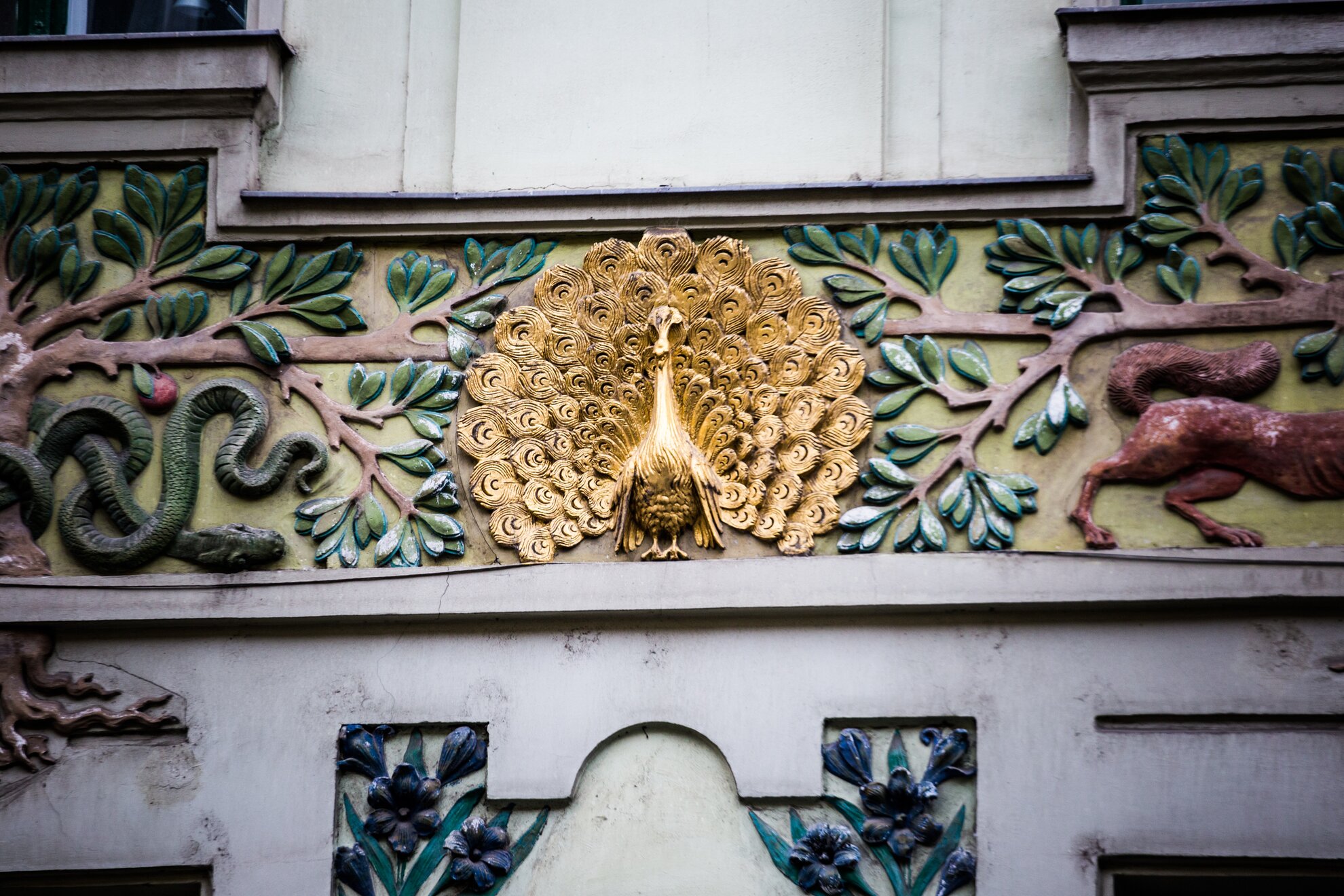
The two adjacent houses feature the four elements: water, air, earth and fire. As we move up the façade, the tree of the Garden of Eden reaches for the sky while the roots cling to the ground, and high above, varying birds fly towards a silver disc representing the moon.
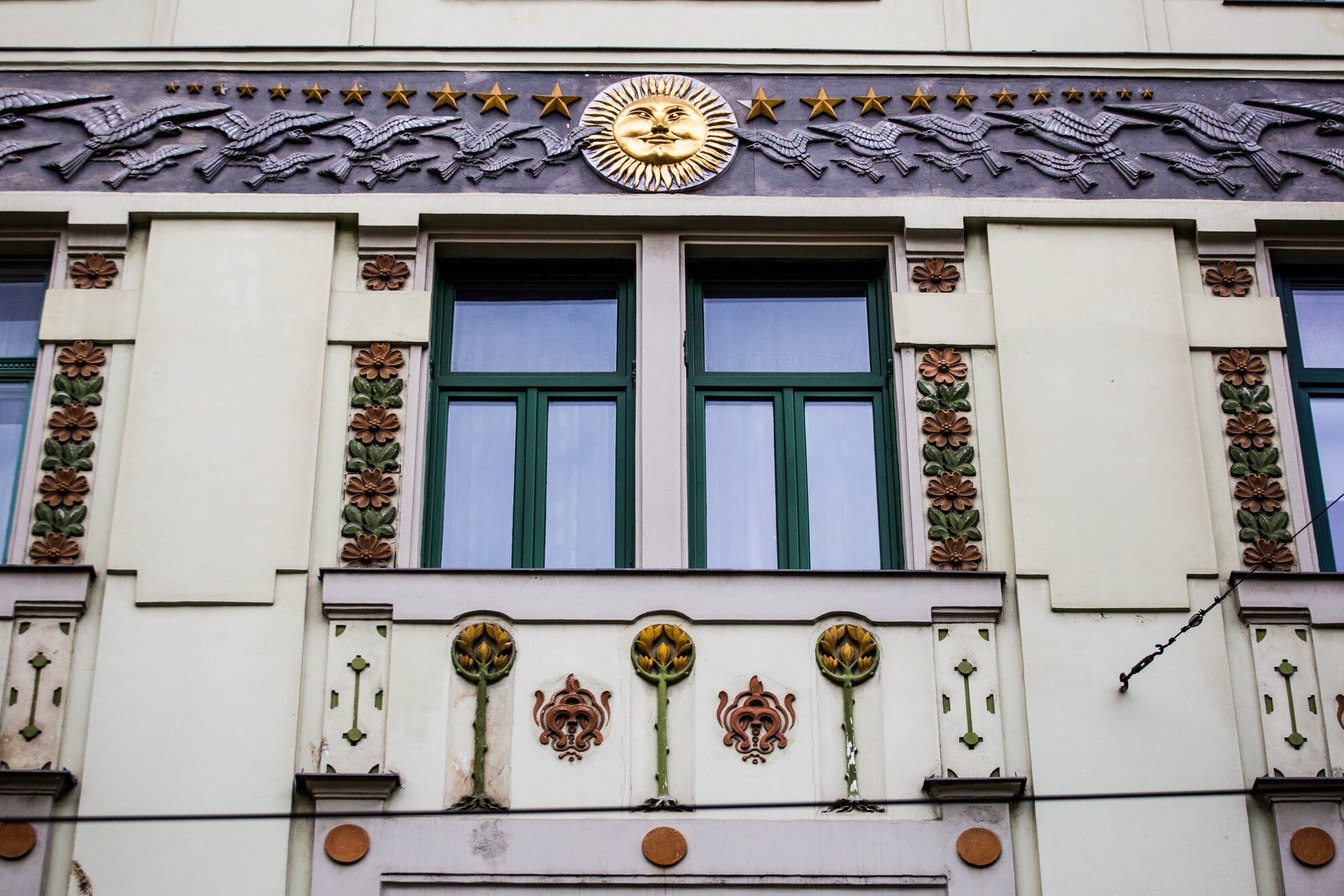
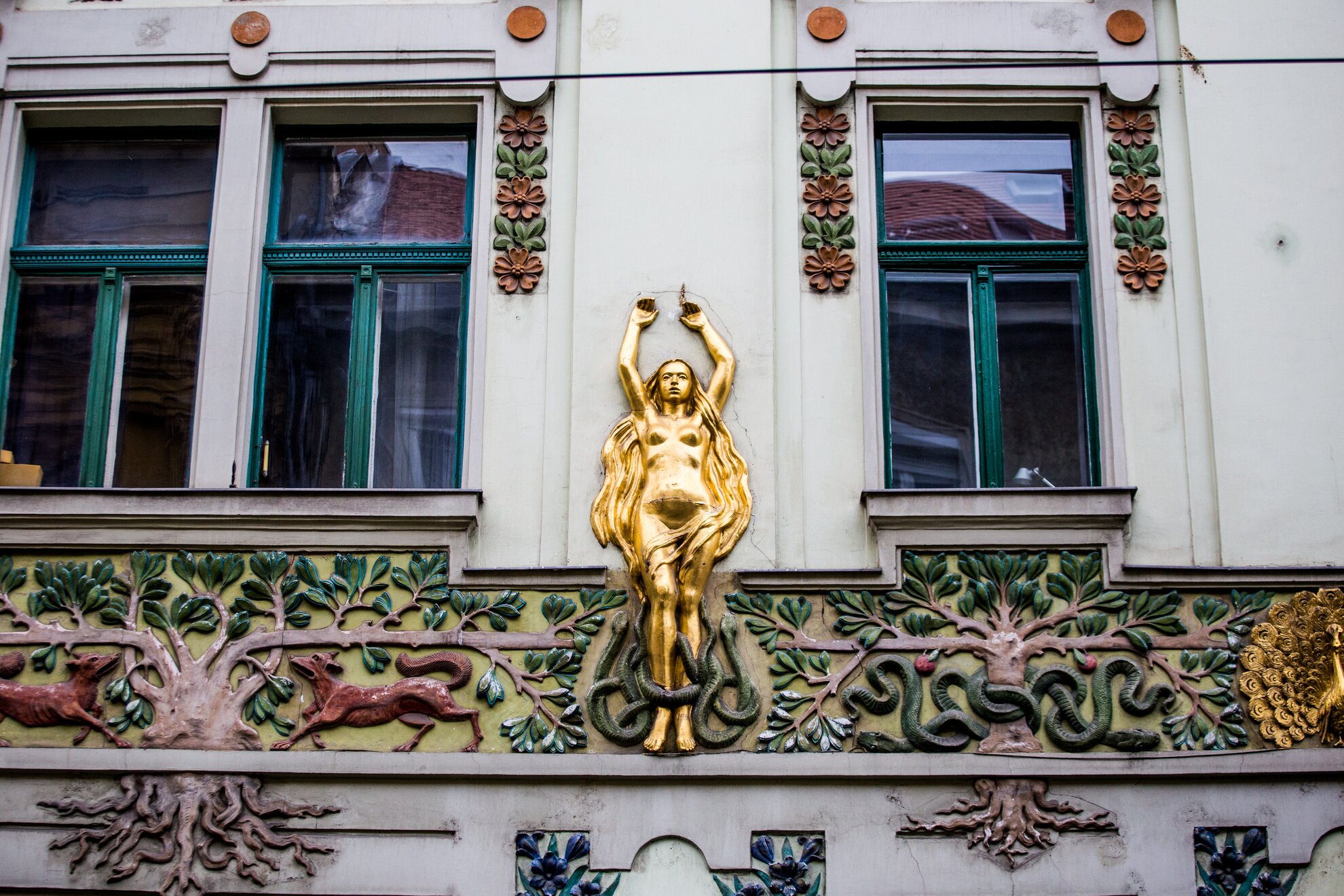
Postatakarékpénztár, Hold utca 4
There are many buildings of Ödön Lechner’s which could appear on this list, but if we were to choose just one, it would be the former Postal Savings Bank on Hold utca. With this stunning building, Lechner took Hungarian architecture to the forefront of the world’s attention.
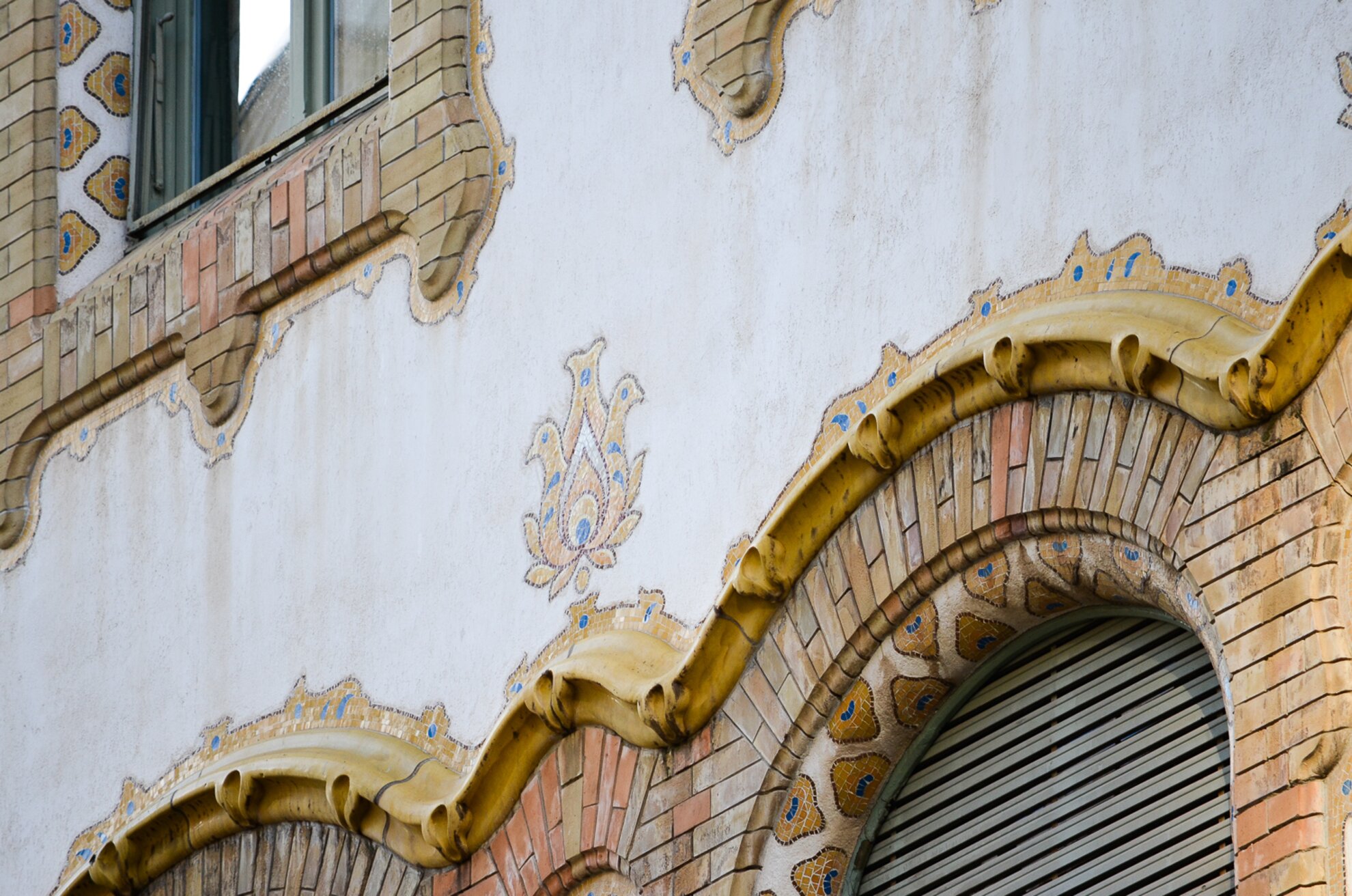
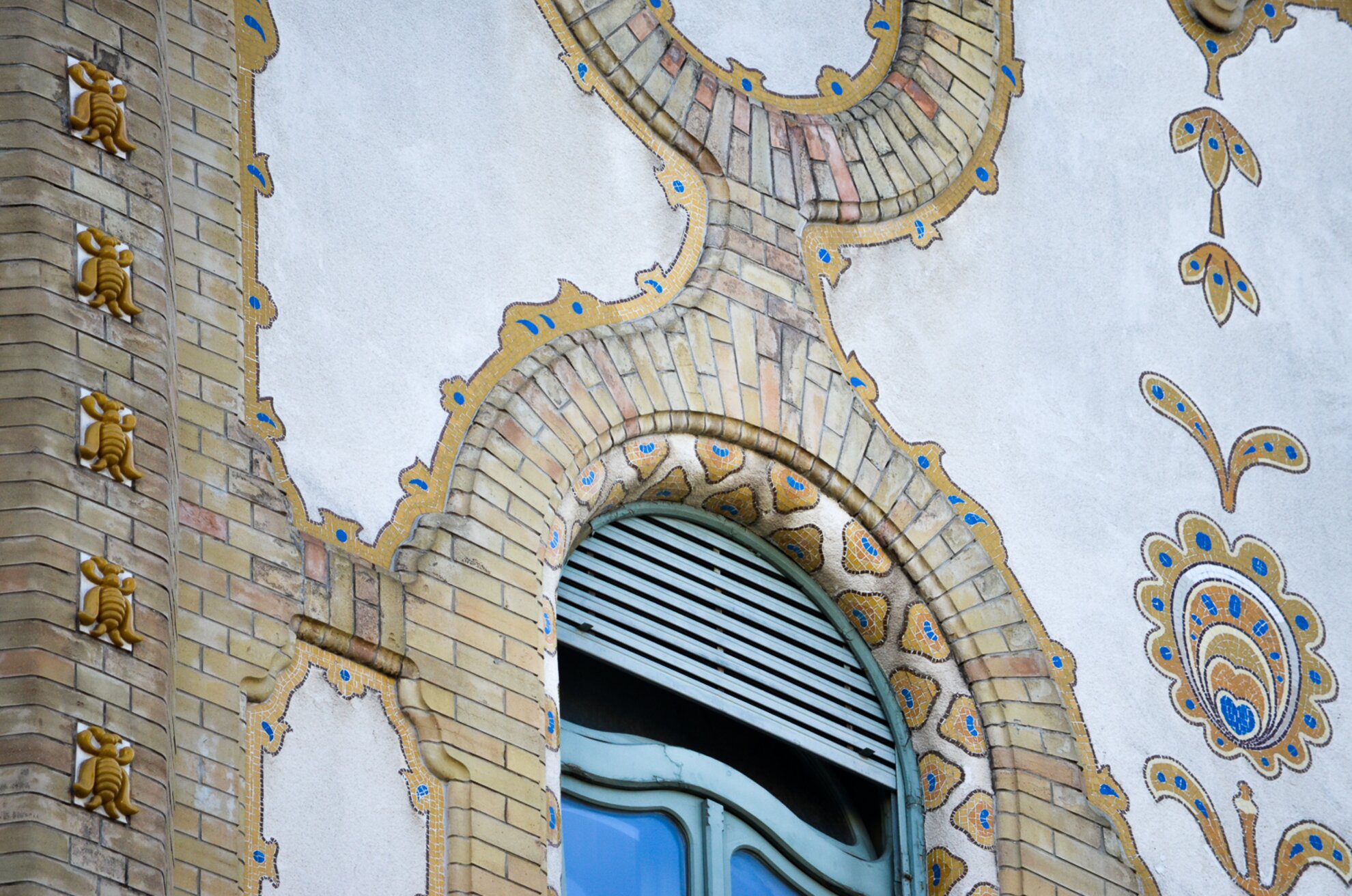
The towering building, with its playful façade, was completed in two years, between 1899 and 1901. Scenes of the Hungarian plains and steppe shepherds run up the walls, alongside diligent bees heading for their hives, dragons guarding treasure on the roof, and all over, mosaic tiles glittering in the sun.
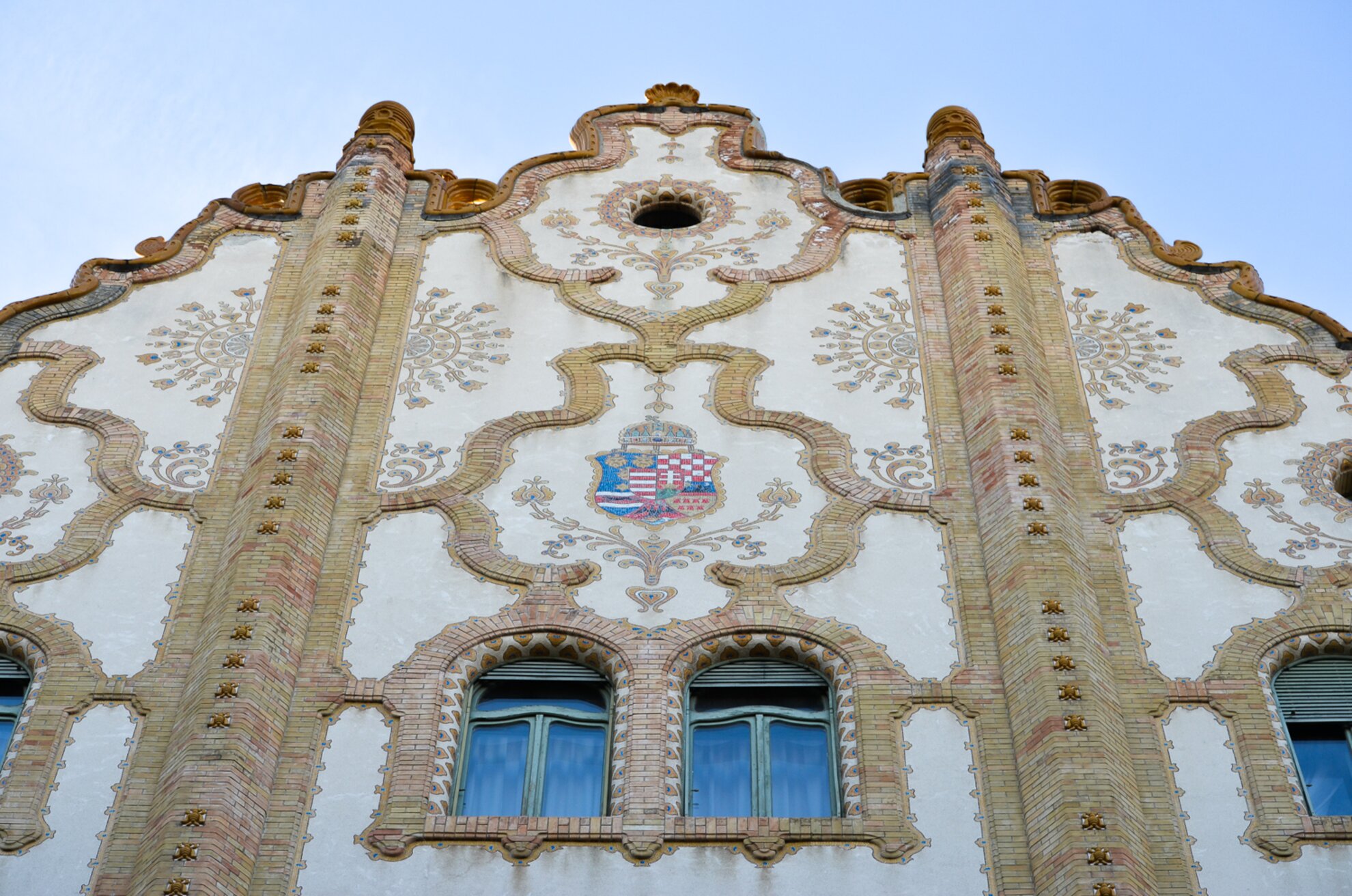
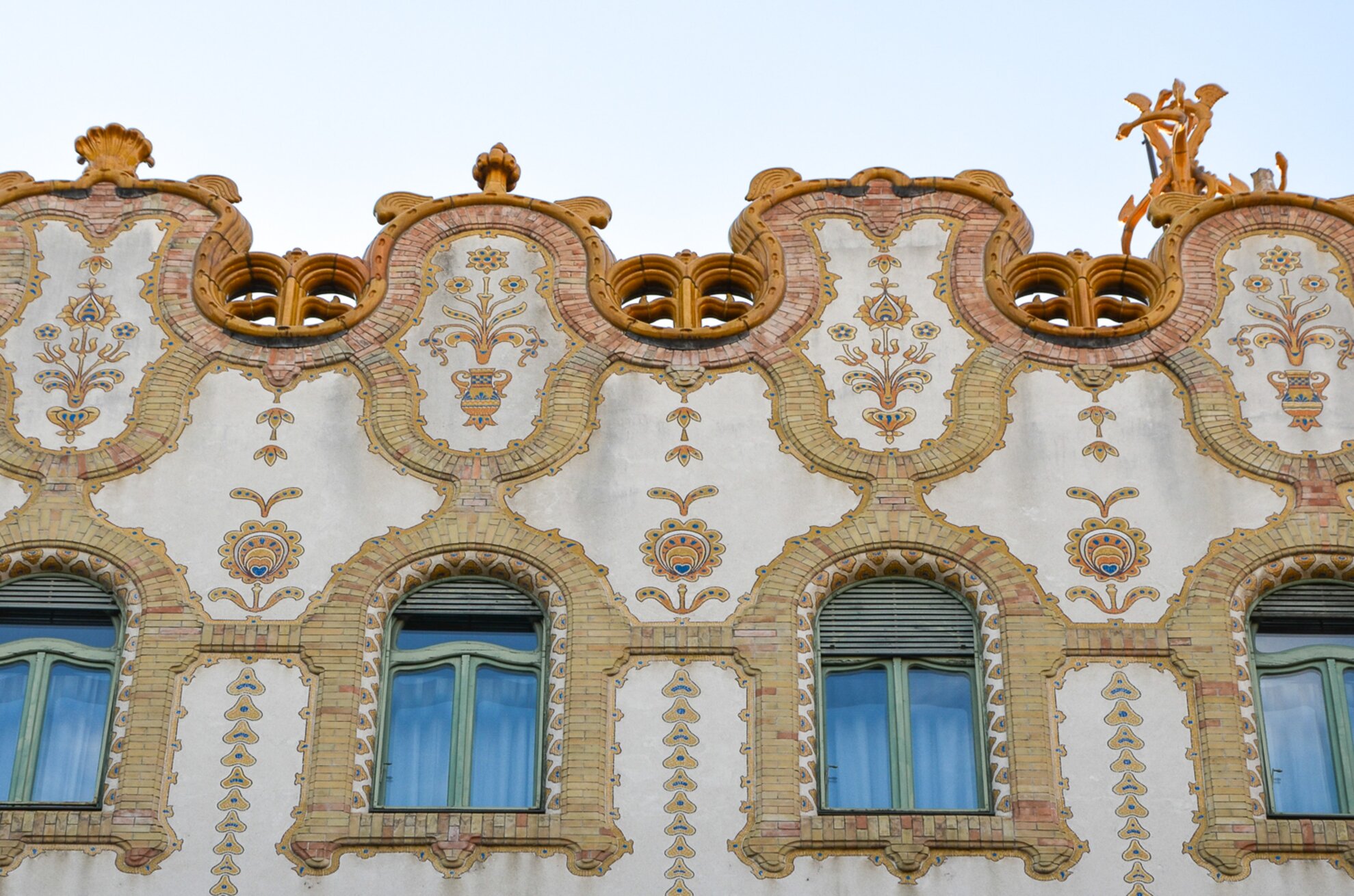
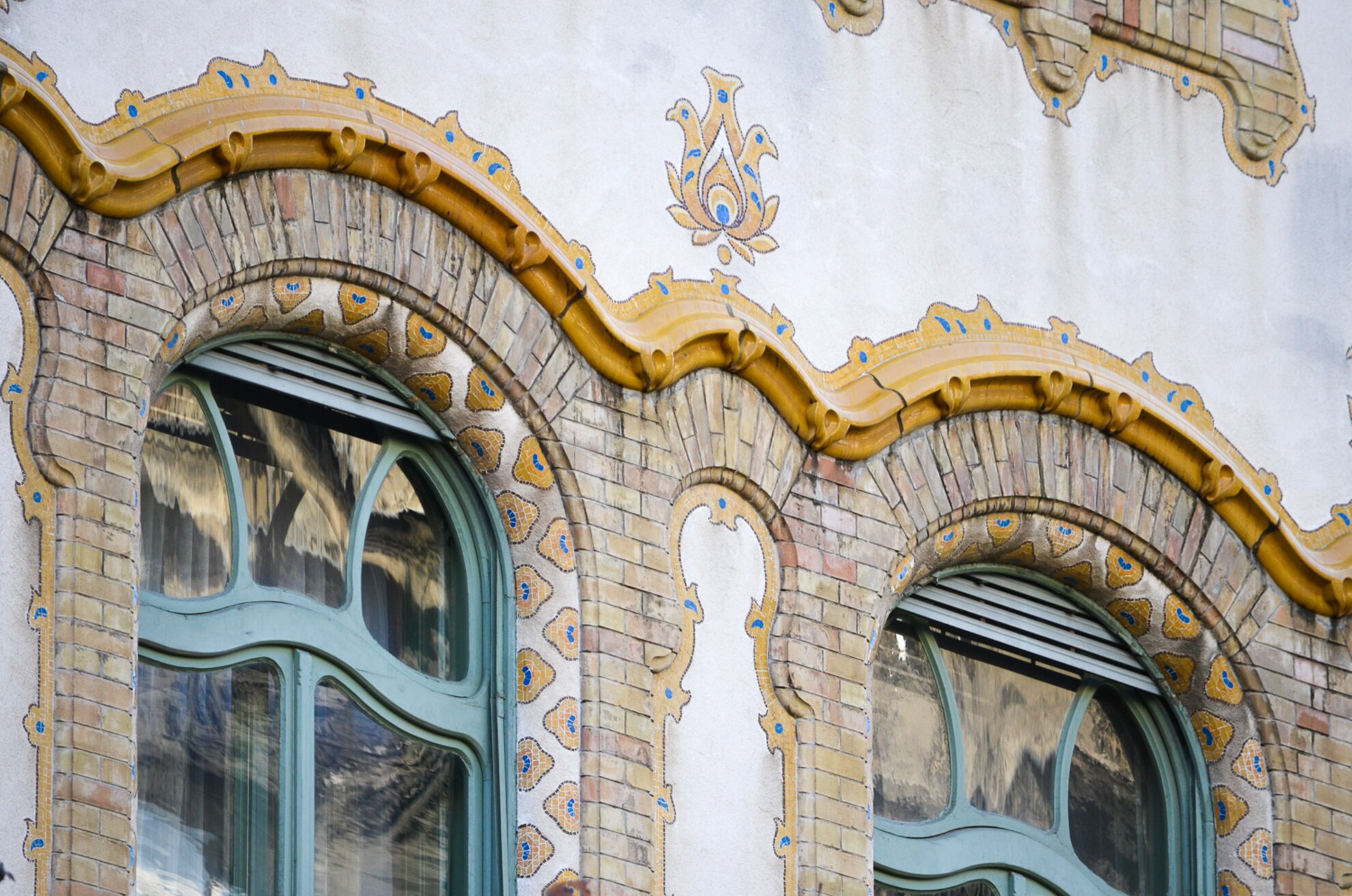
Kőrössy villa, Városligeti fasor 47
Albert Kálmán Kőrössy's villa was completed in 1900, with ornate peacock window frames and a richly decorated façade. This is a textbook example of Art Nouveau as well, dripping with French influence.
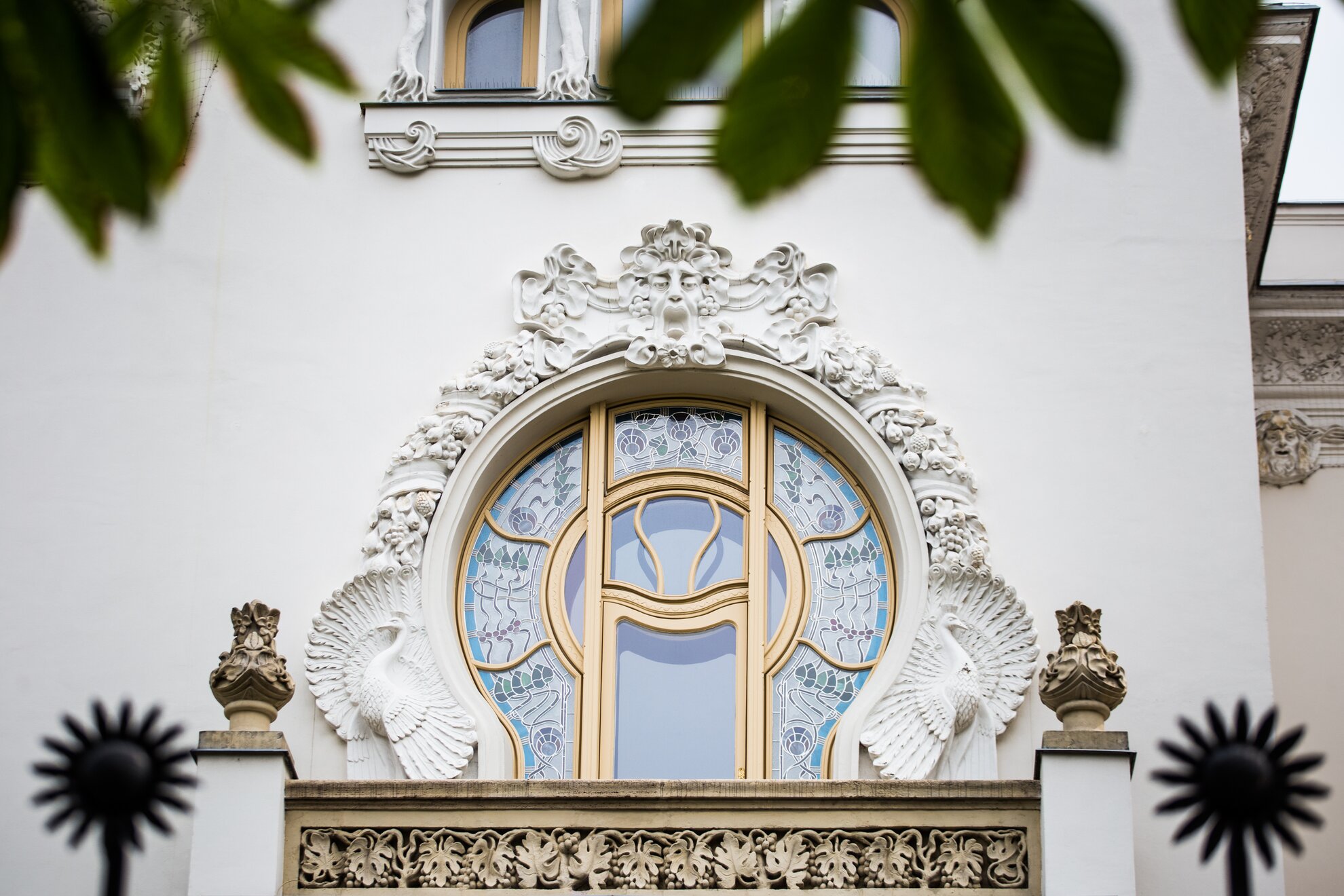
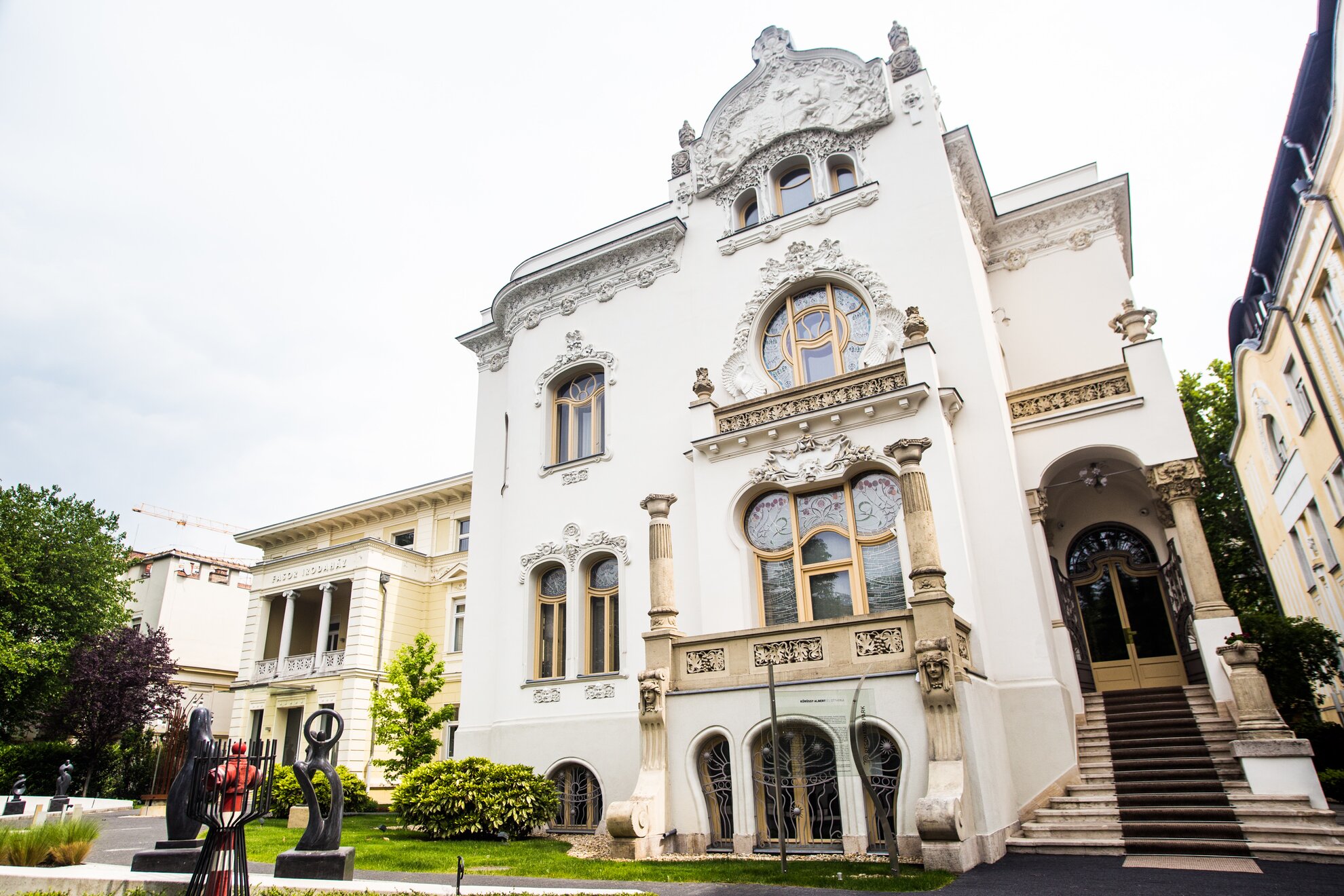
The unusual shape of the windows, and the doors which open onto the ground-floor terrace, immediately catch the eye. Peacocks reliefs around the first-level windows splay their tail feathers, and stained glass within the windows shows vines and flowers.
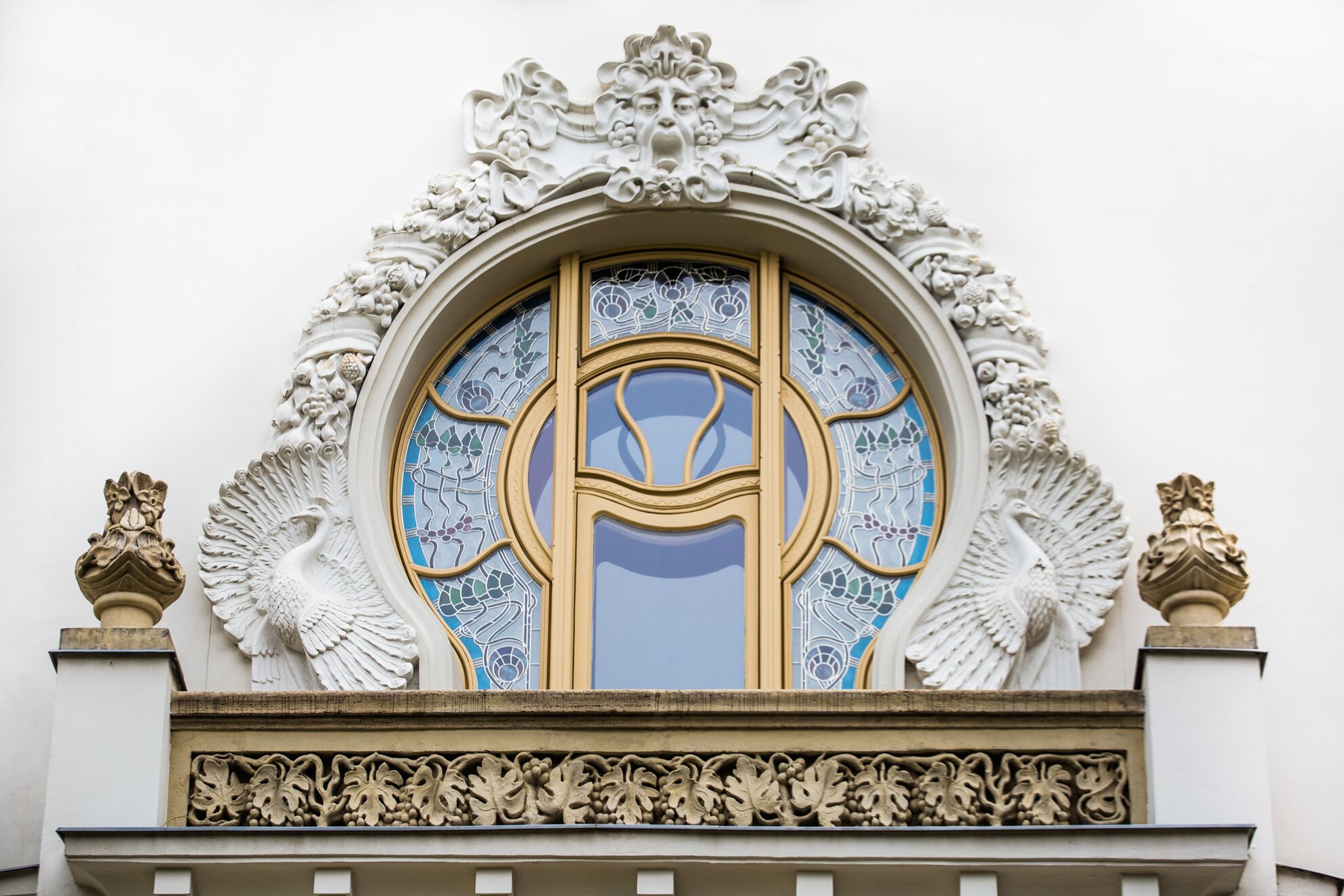
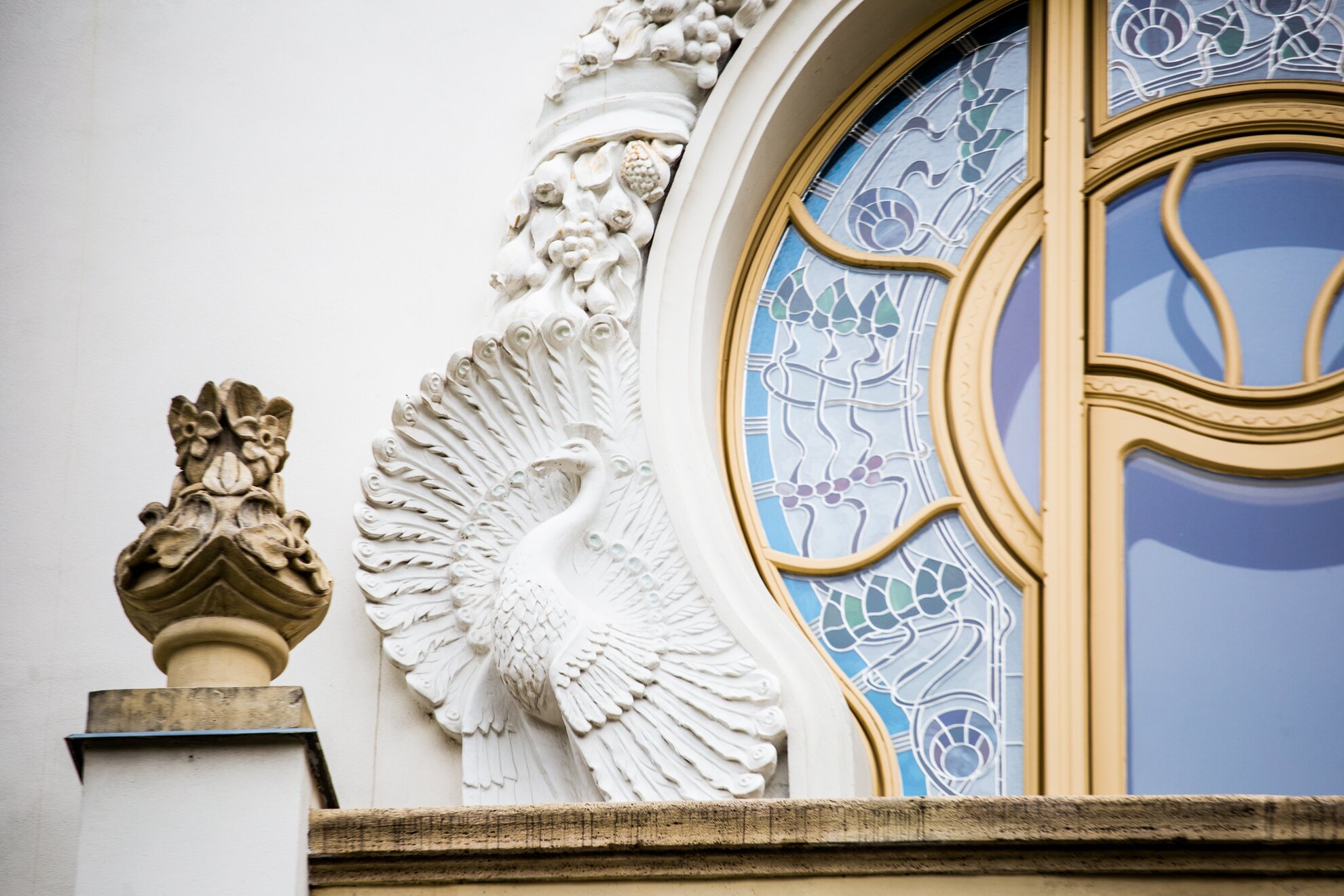
Dozzi villa, Májusfa utca 5
The Dozzi villa is a hidden treasure of Budapest. It was built in 1905 by the Italian salami manufacturer Giuseppe Dozzi, and has undergone renovation in recent years. Every inch of the façade on the house is covered in winding tendrils and hiding peacocks.
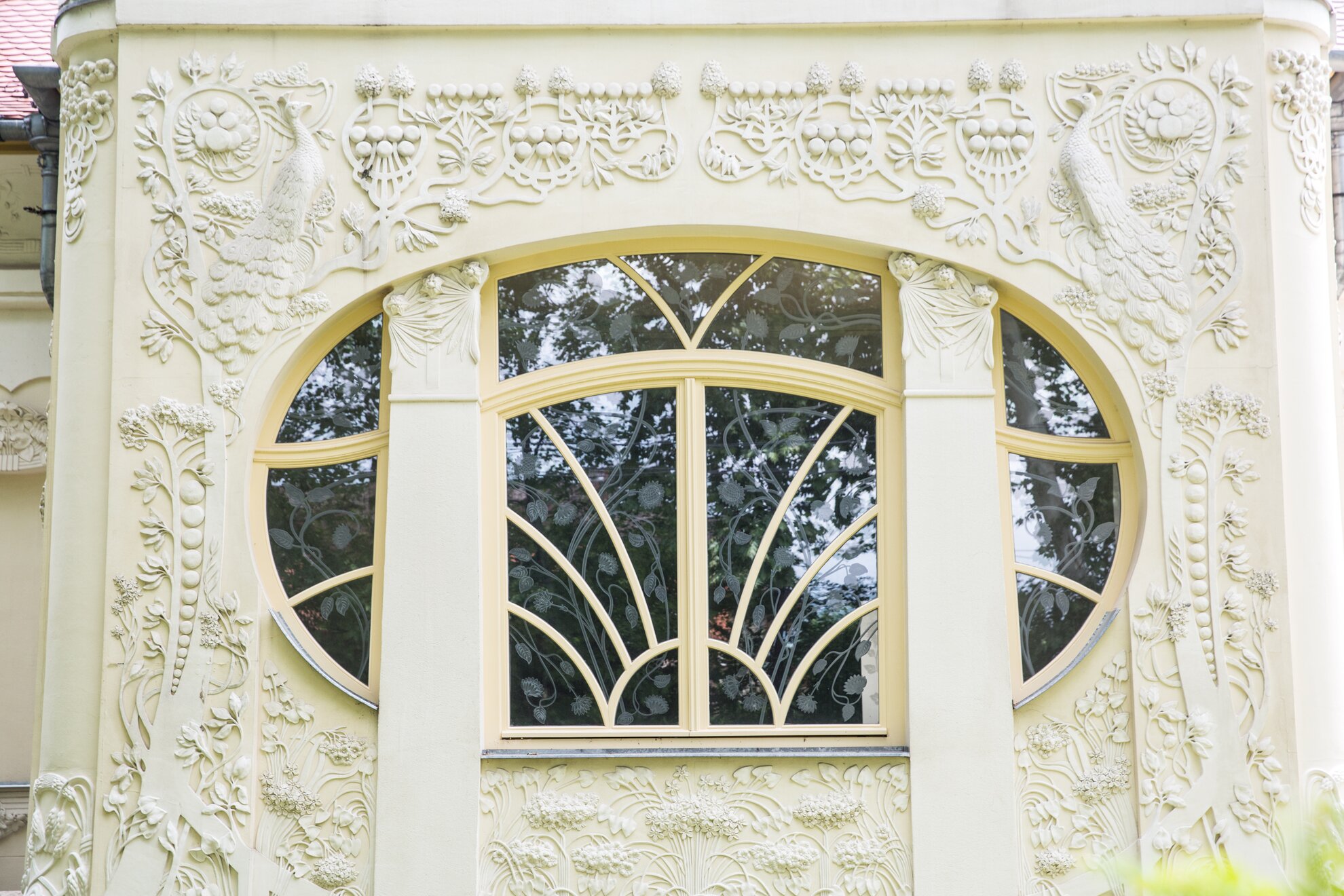

Paulheim building, Bakáts tér 3
At the mouth of Ráday utca stands the Paulheim apartment building, whose façade shows an interesting scene. A man stands draped in a veil on the left-hand side, while a female painter copies his form onto her canvas to the right.
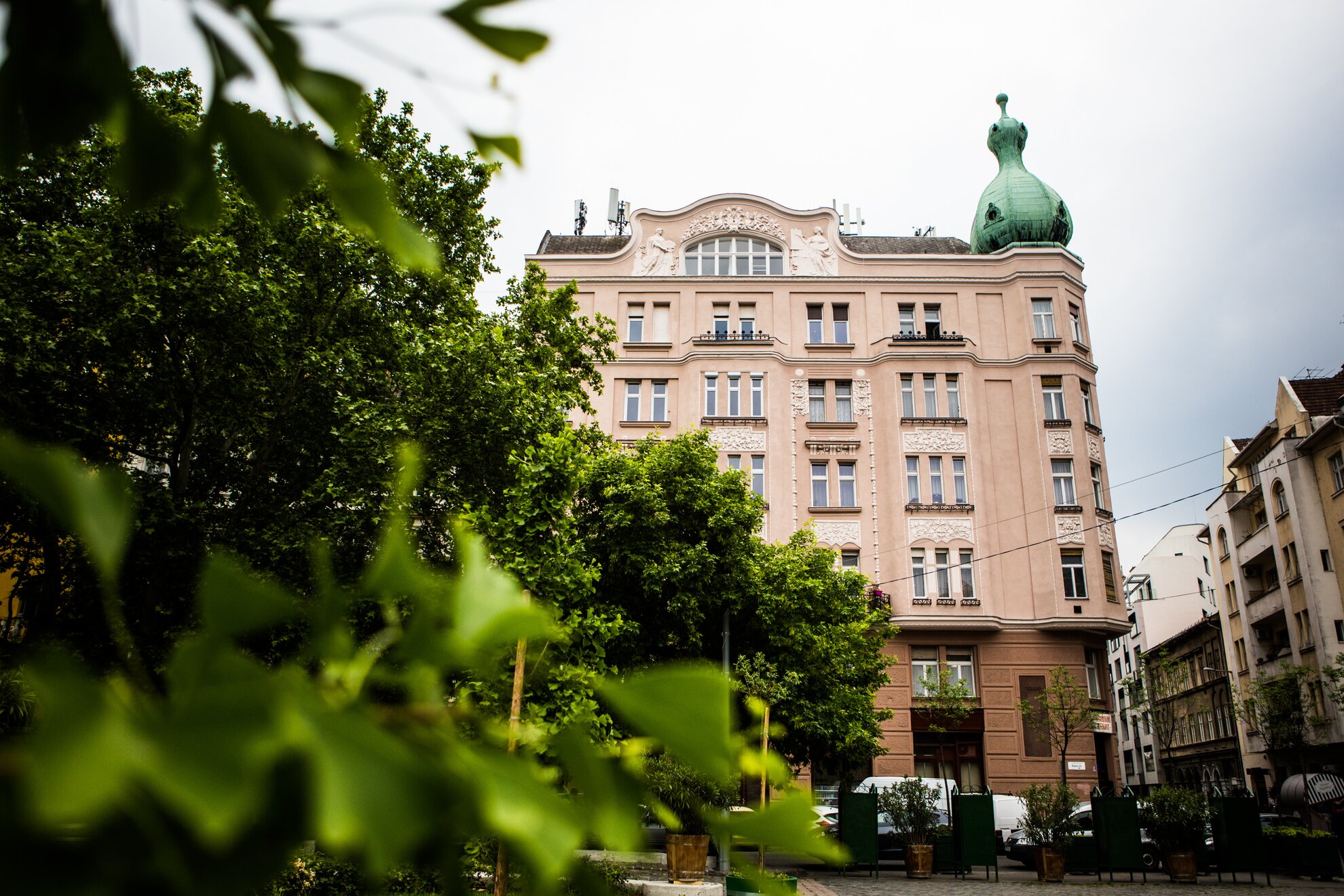
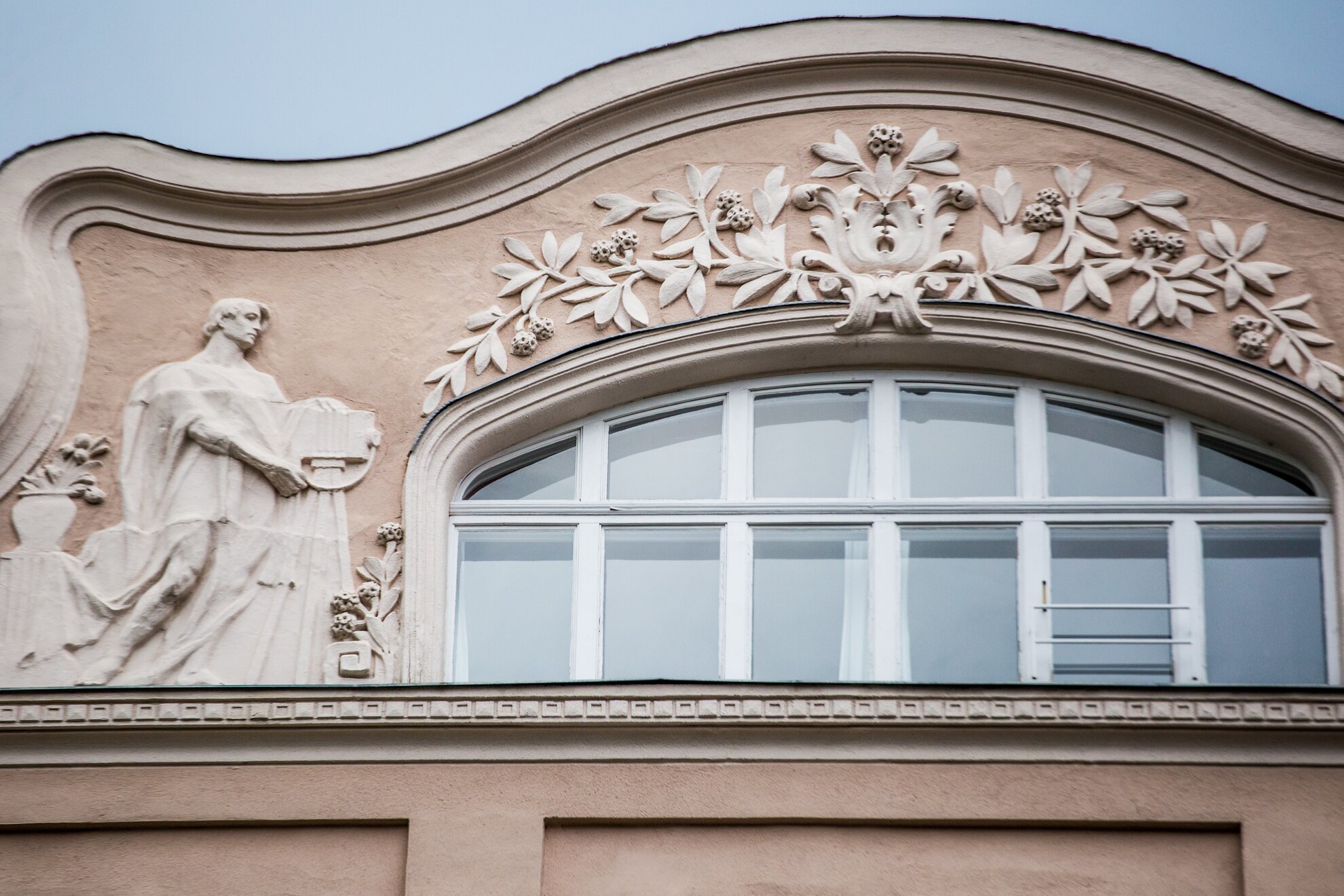
This tenement house was completed in 1910, based on the plans of Ferenc Paulheim. And it’s not alone – many of the buildings in the neighbourhood were designed by another member of the Paulheim architectural dynasty, József.
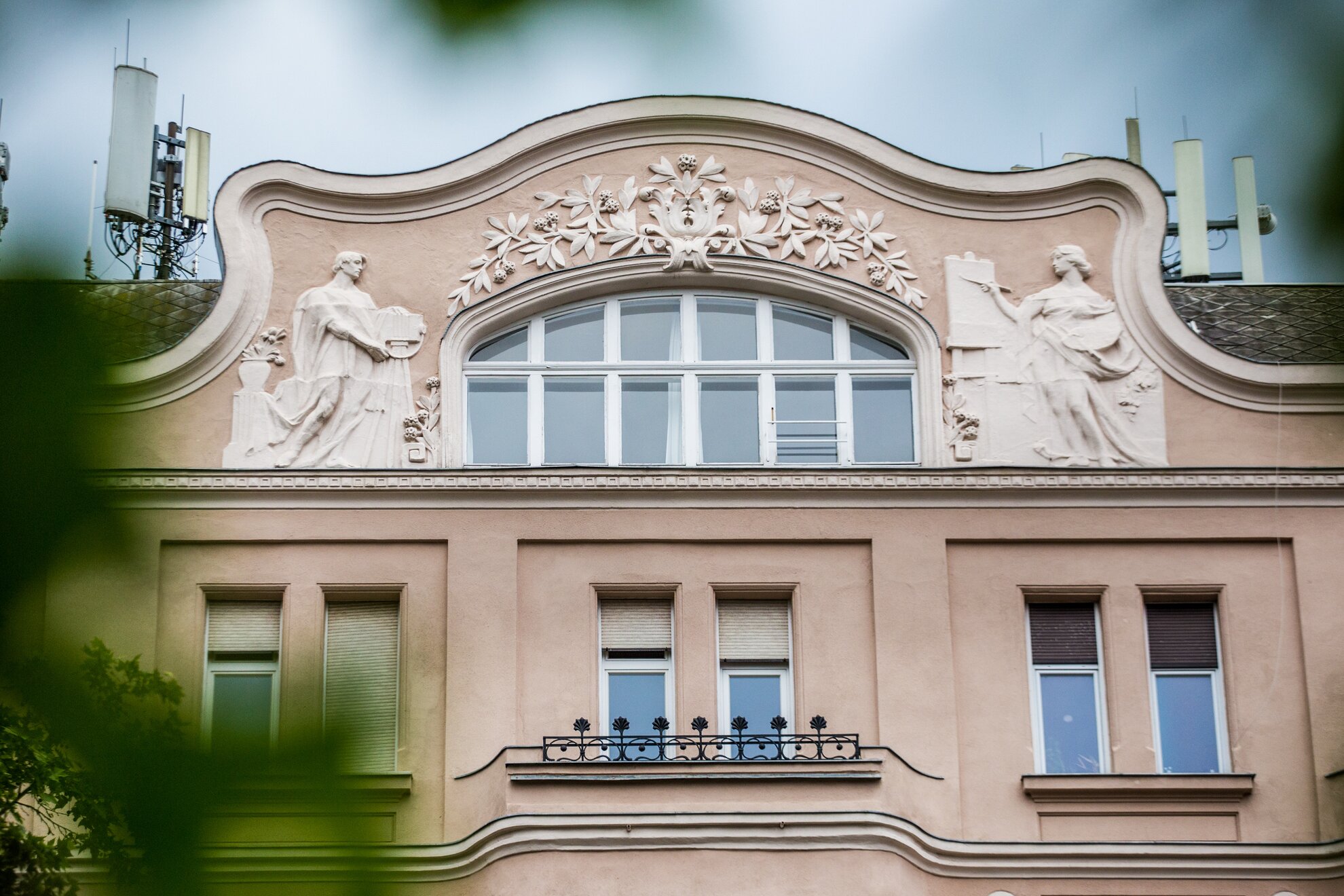
Burger-bérház, Síp utca 17
Stunning blue, teal and aquamarine tiles splash across the façade of this house on Síp utca. Designed by the Löffler brothers Sándor and Béla, this tenement house was completed in 1906. Most people recognise the bird-menorah gate, but the iridescent Zsolnay insert framing the first-floor windows, and the adjacent Atlases, are also worthy of attention.
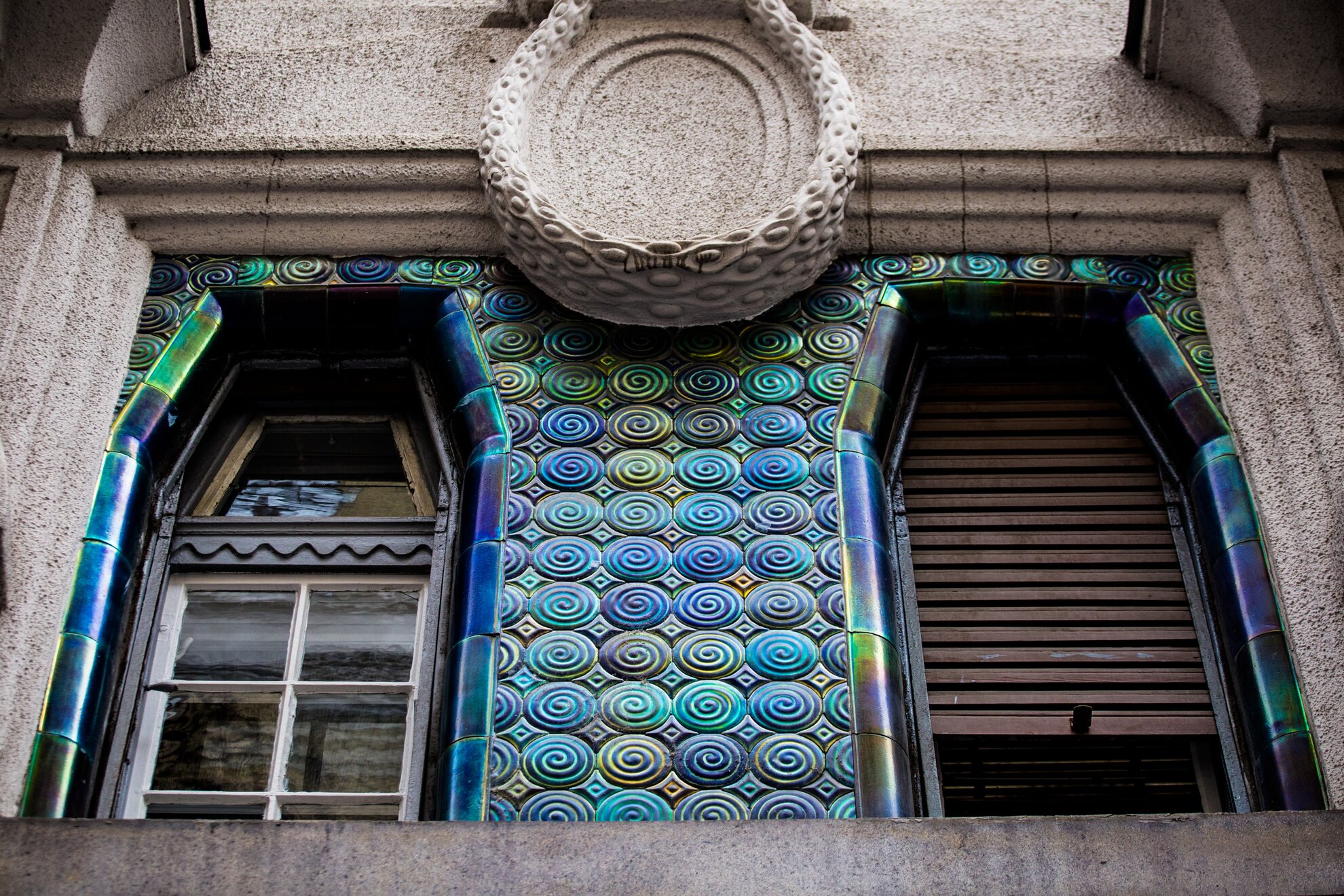
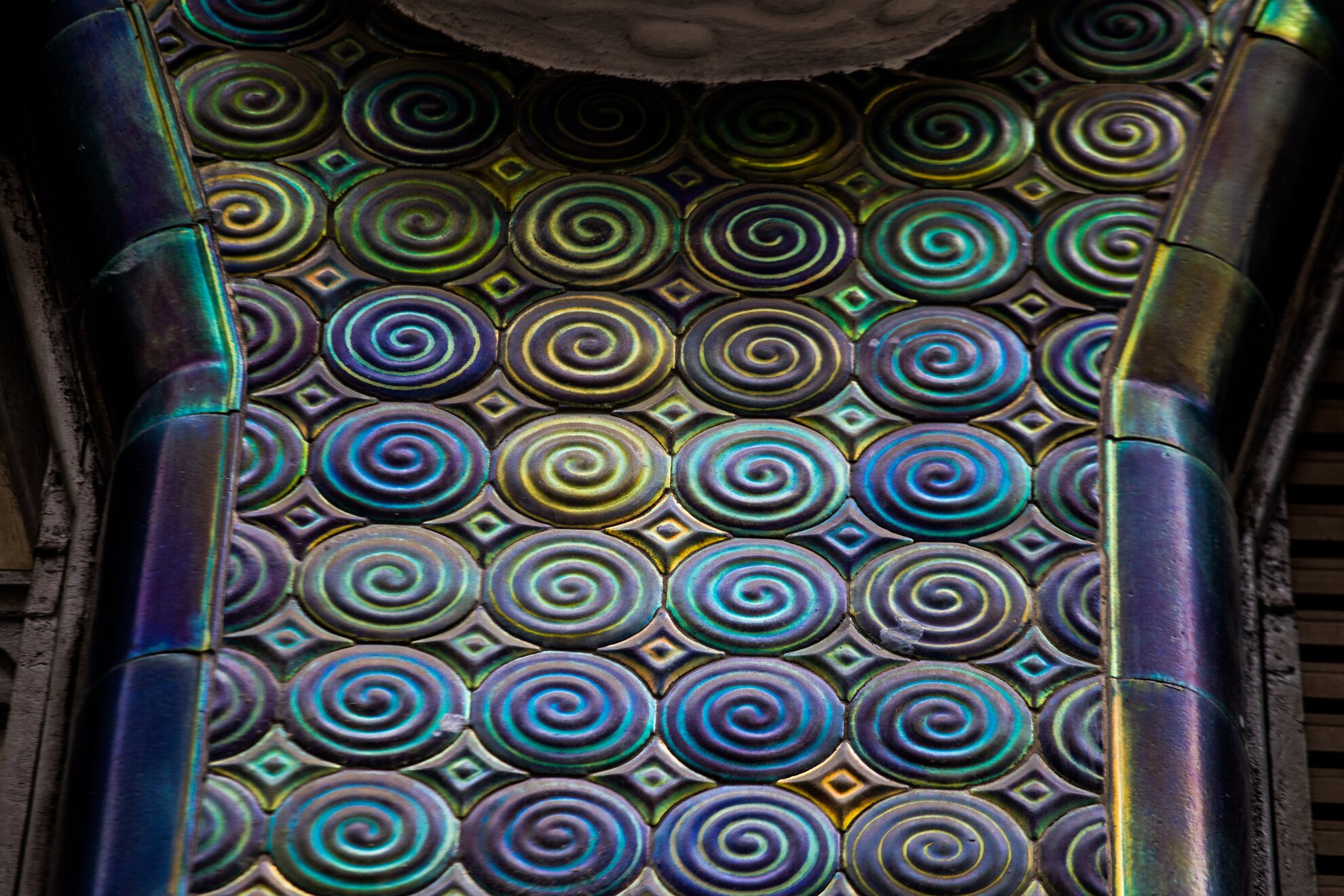
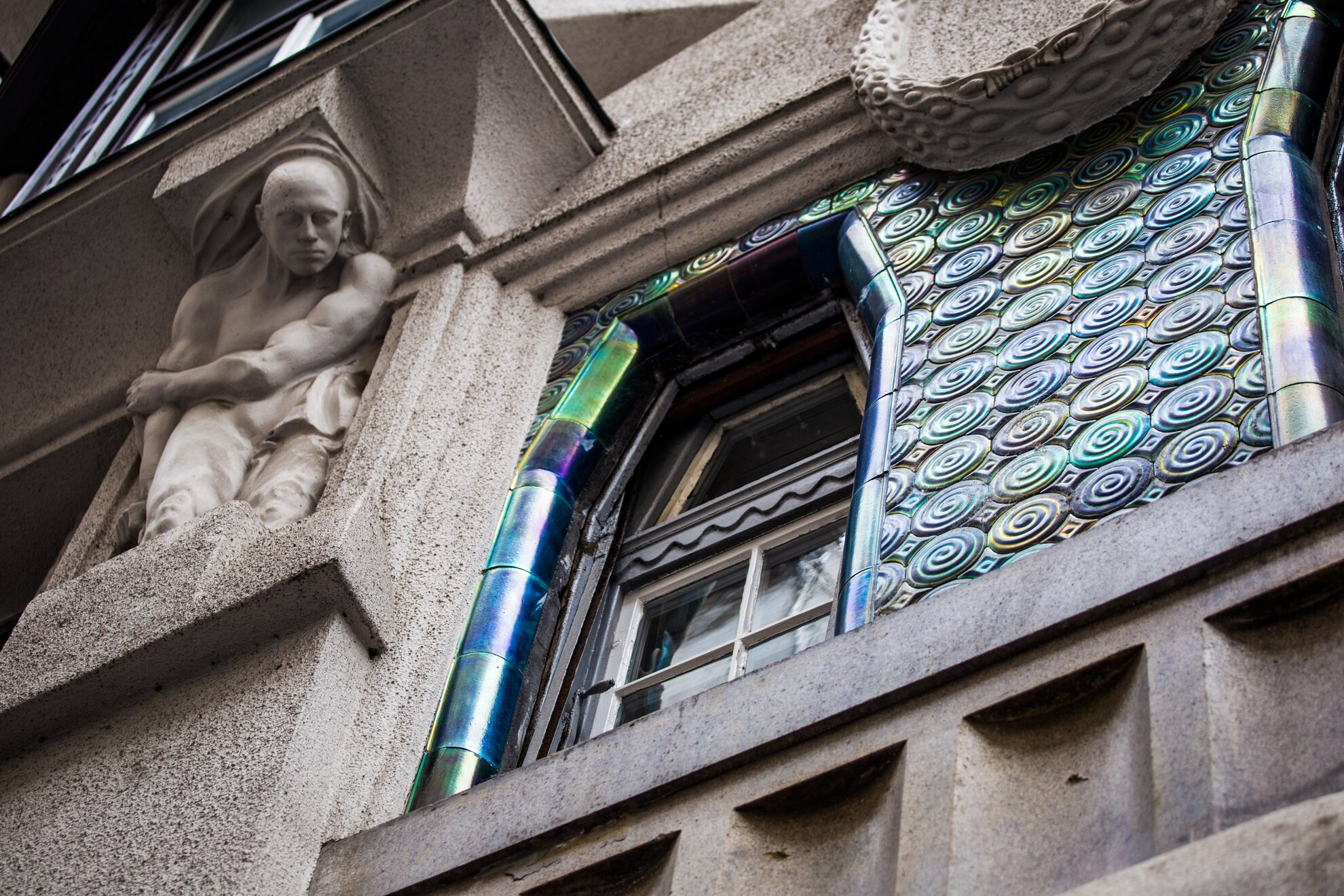
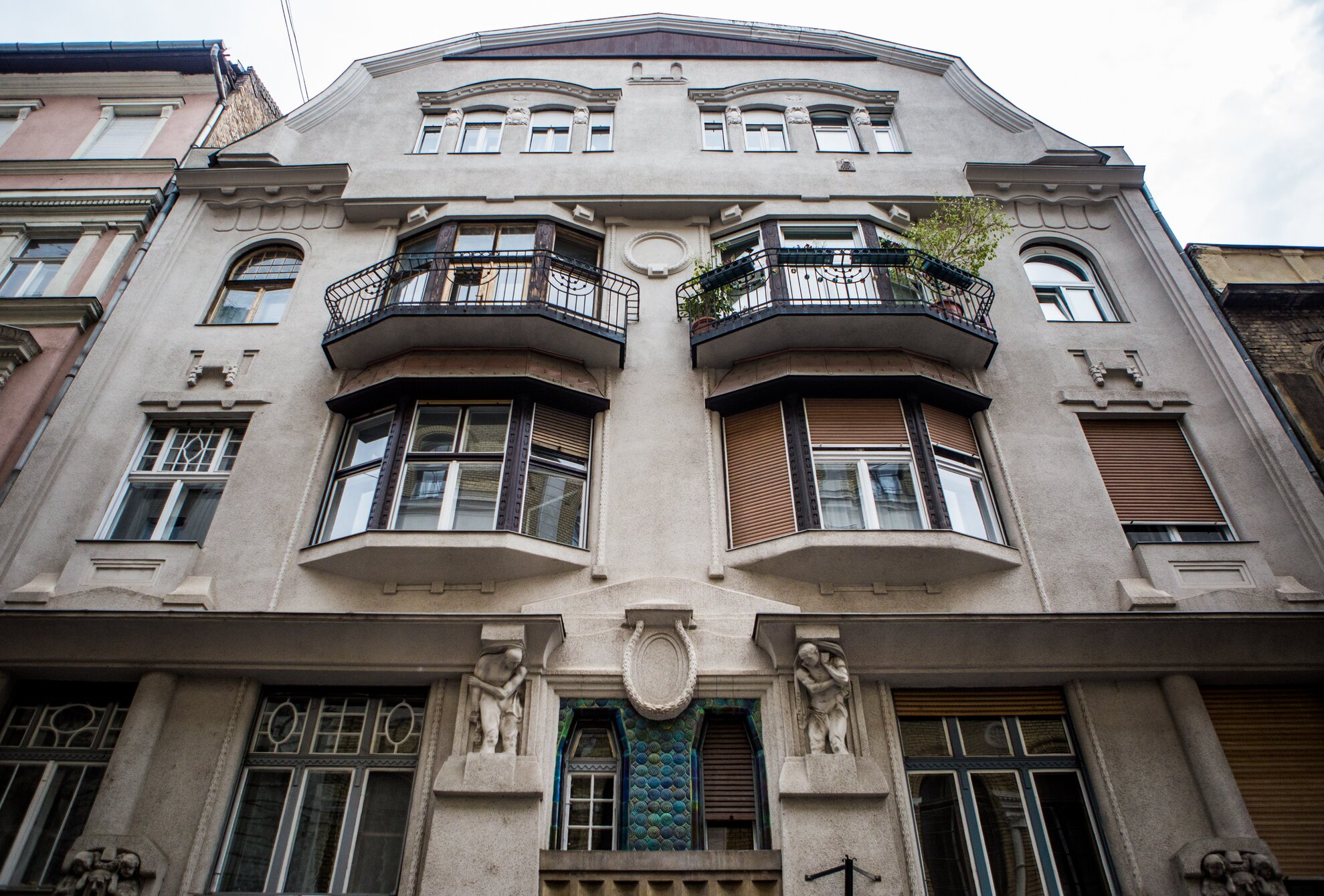
Honvéd utca 16
This building was designed by Emil Vidor and completed in 1912, distinctly more modern and Art Deco than Vidor’s previous works, such as the Egger villa on Városliget fasor or the famous Bedő House on Honvéd utca. The enclosed balcony is covered in colourful geometric shapes, making it stand out from the otherwise plain façade.
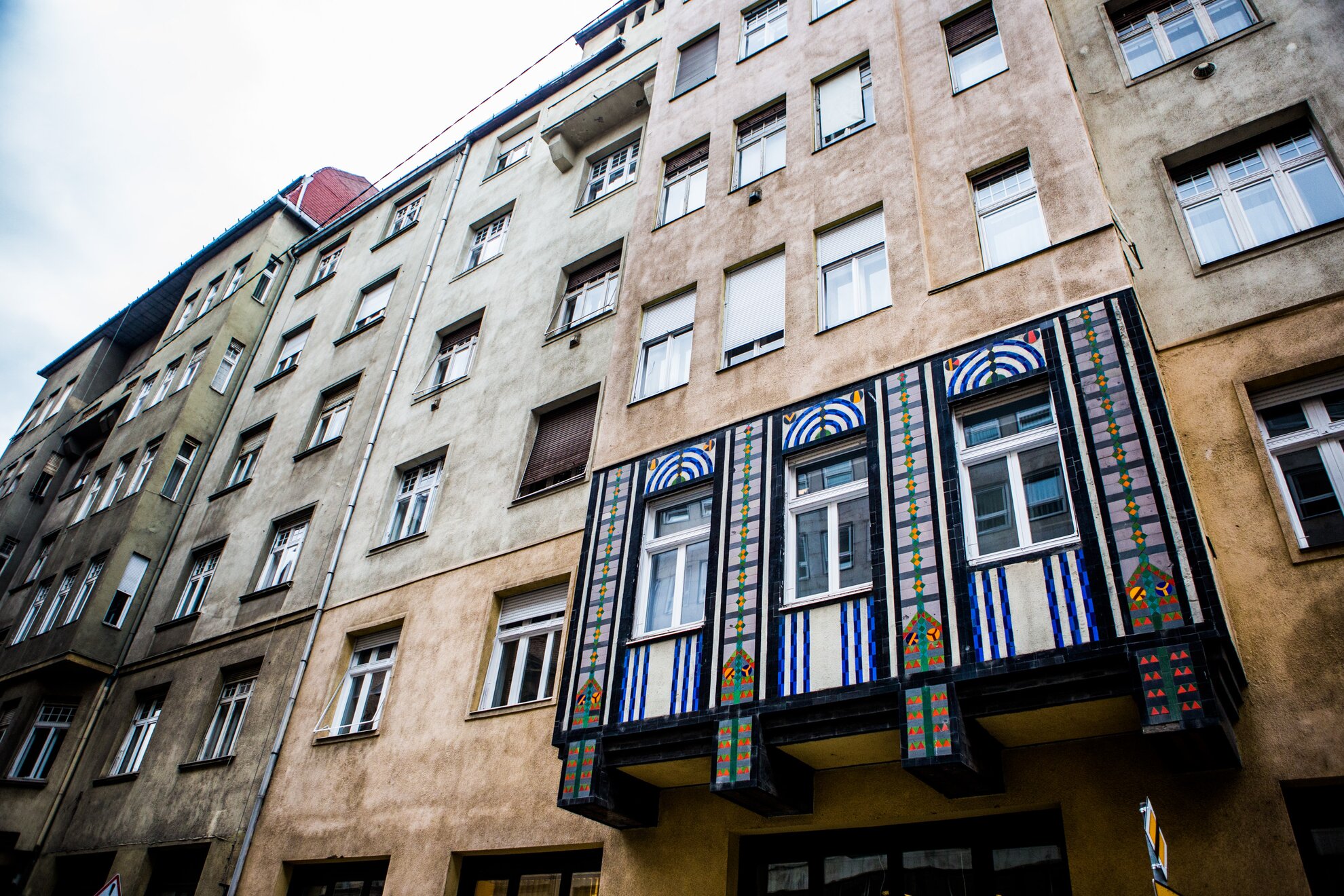
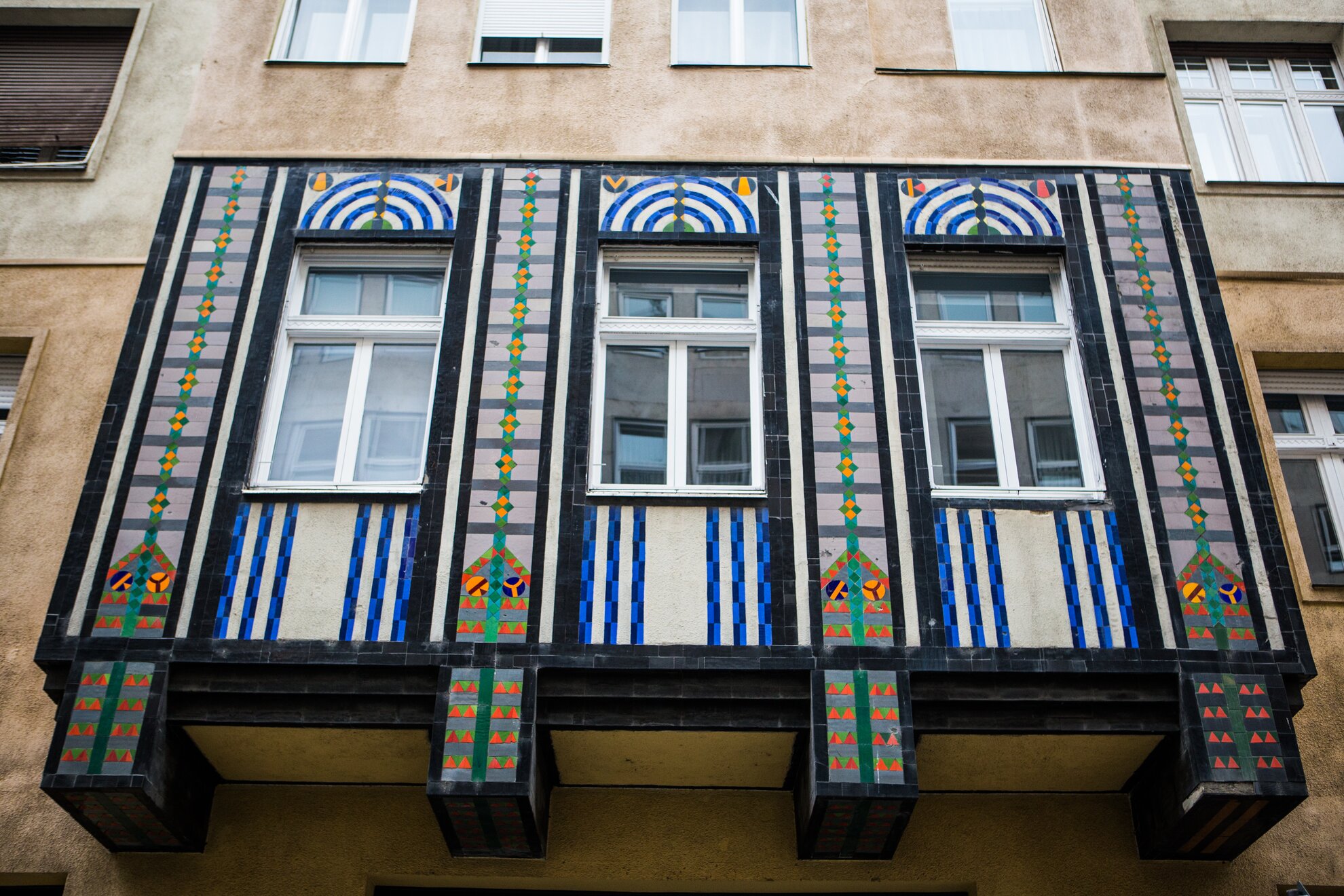
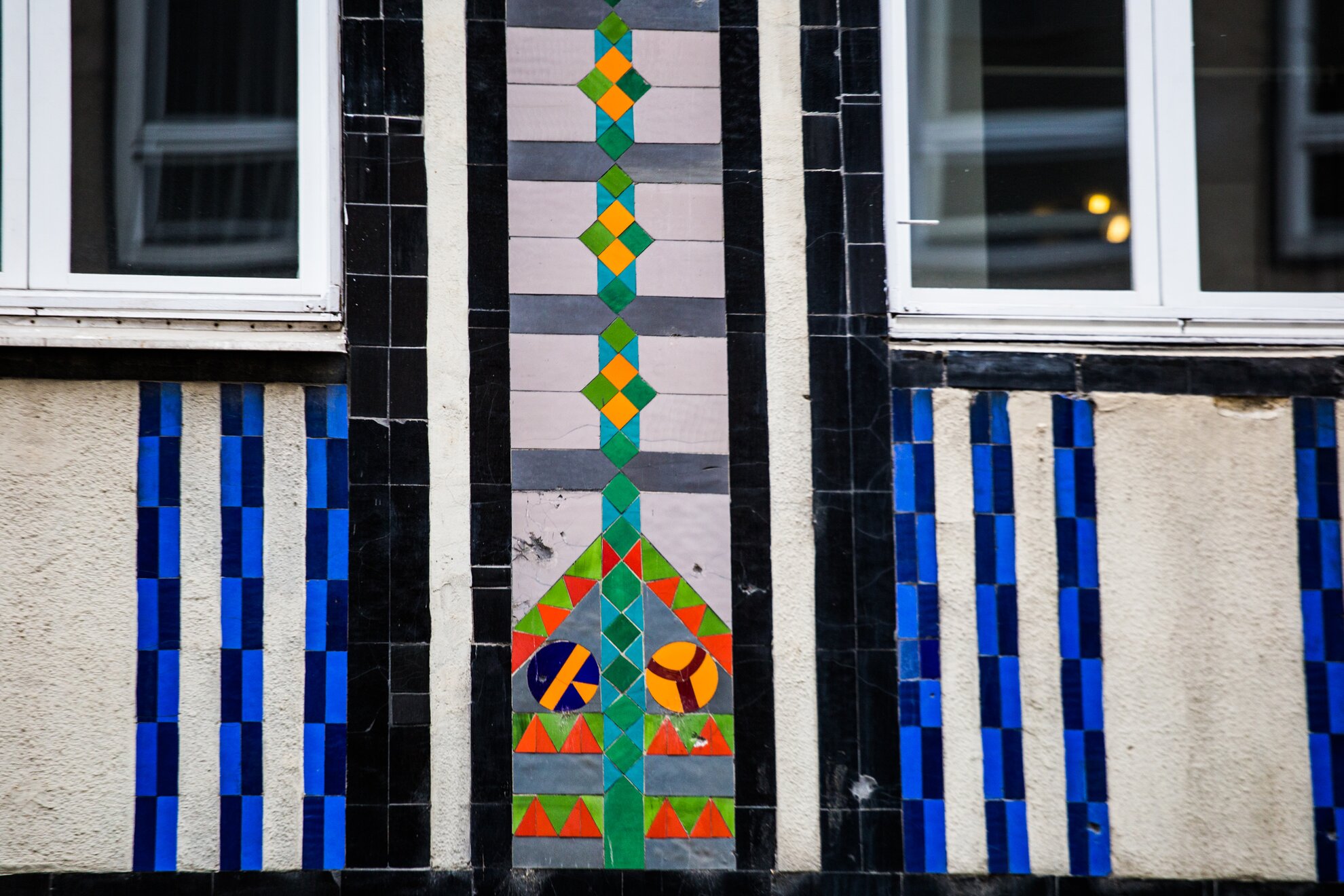
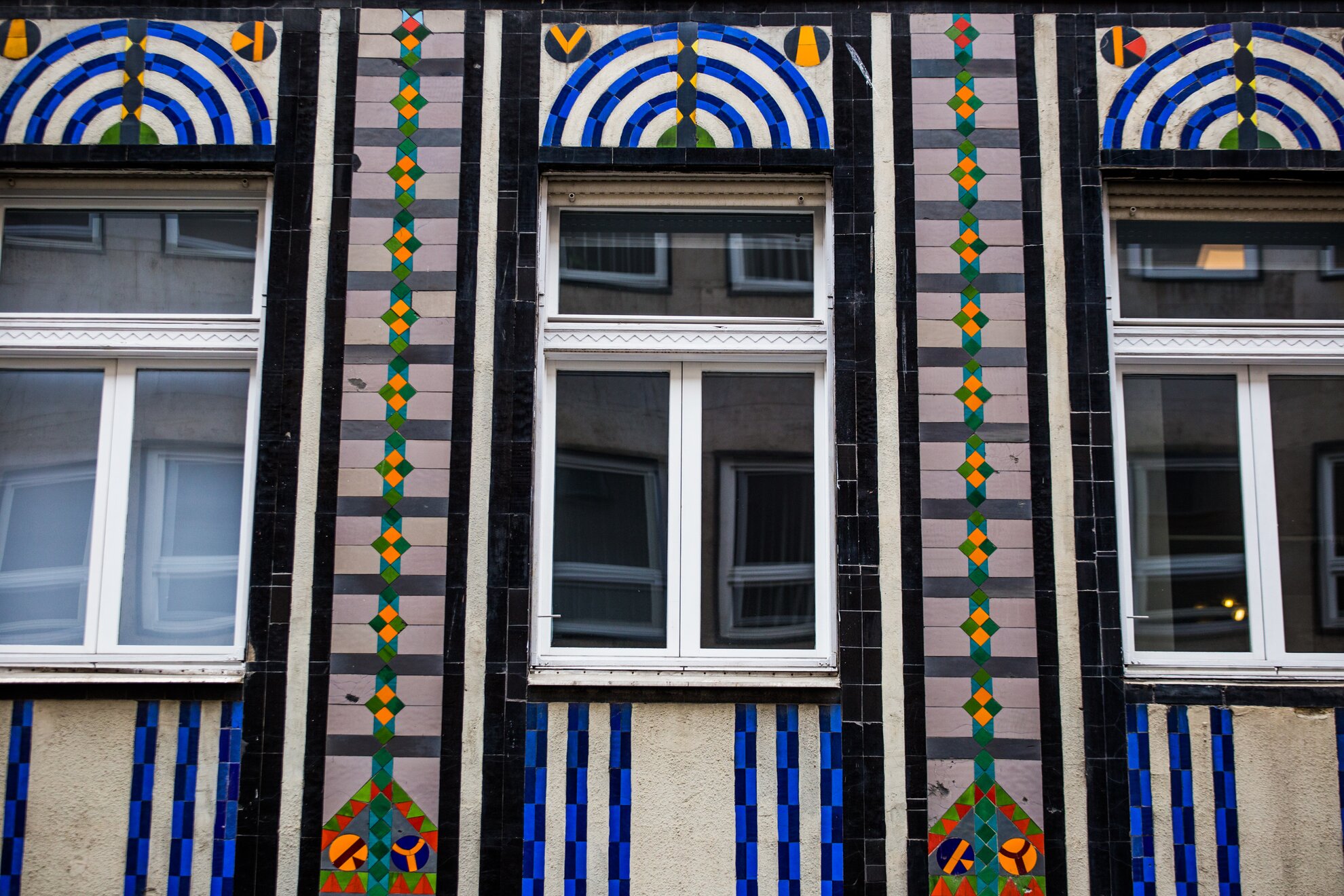
Pannónia utca 19
Újlipótváros is one of Budapest's most diverse, modern districts, where Art Nouveau, Art Deco and Hungarian modernism come together in an eclectic mix.
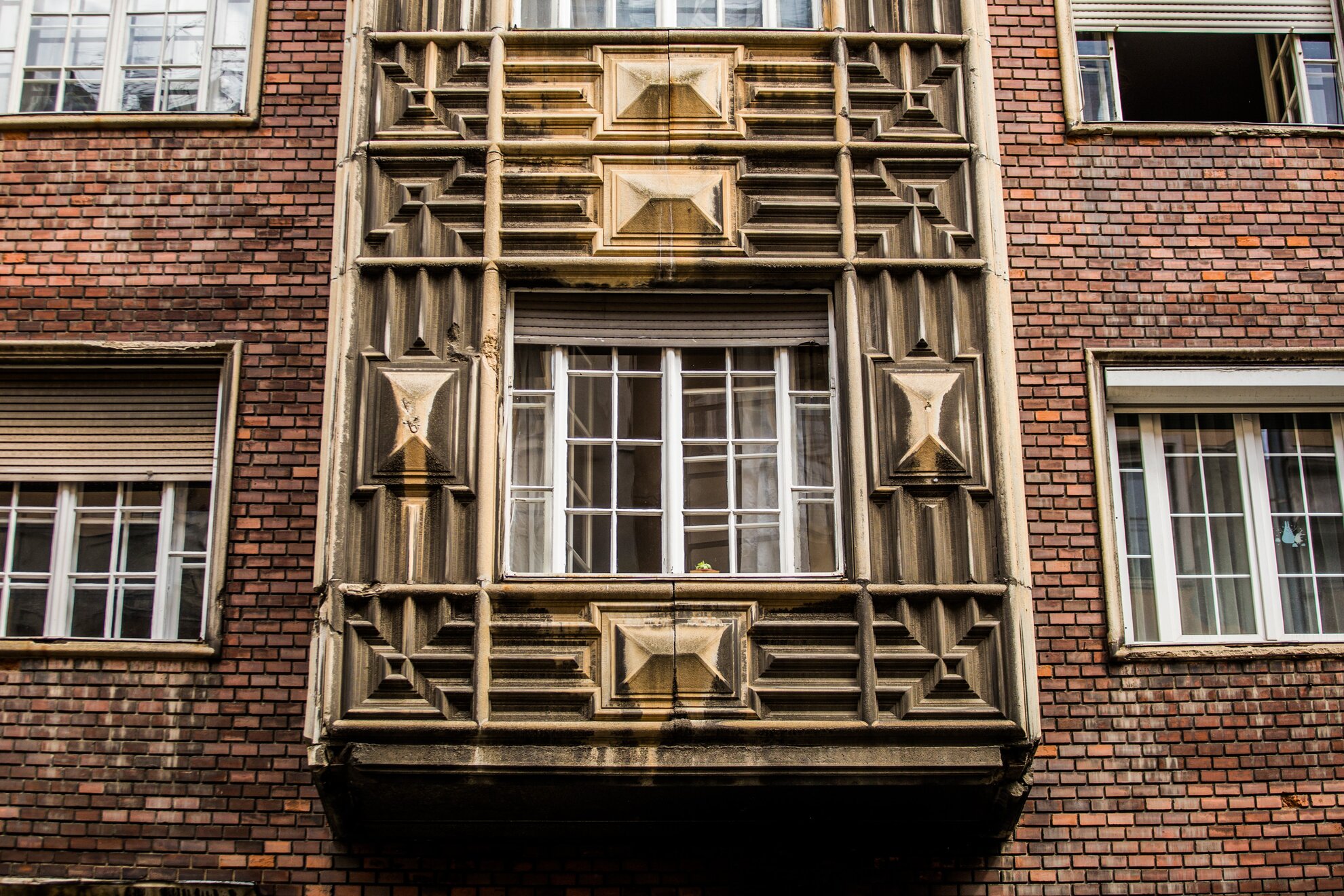
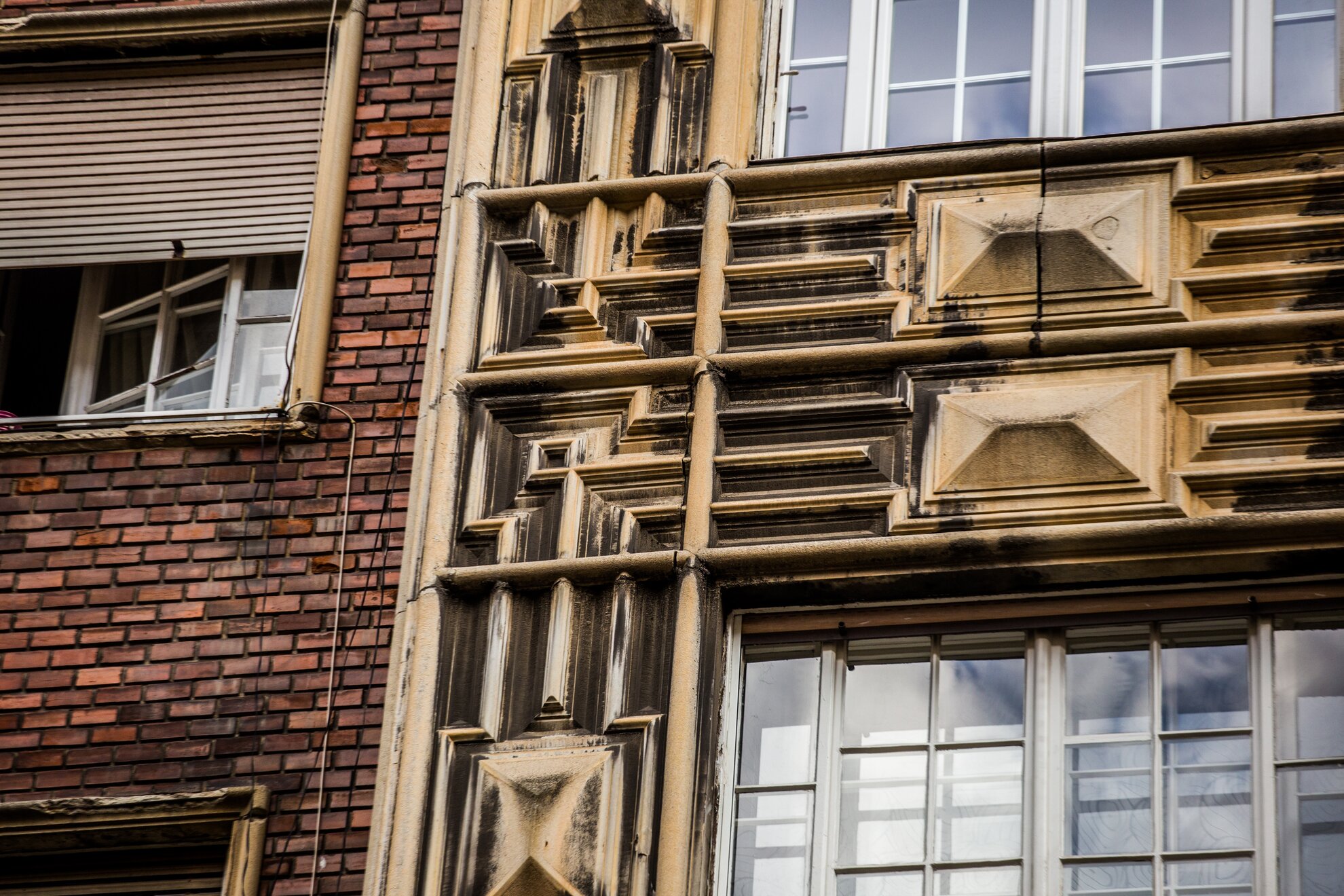
In 2019, author Zoltán Bolla released a volume detailing 700 buildings in Budapest, of which this building on Pannónia utca is included. According to Bolla, the façade was decorated with Greek meander and Far-Eastern swastika motifs, completed in 1929.
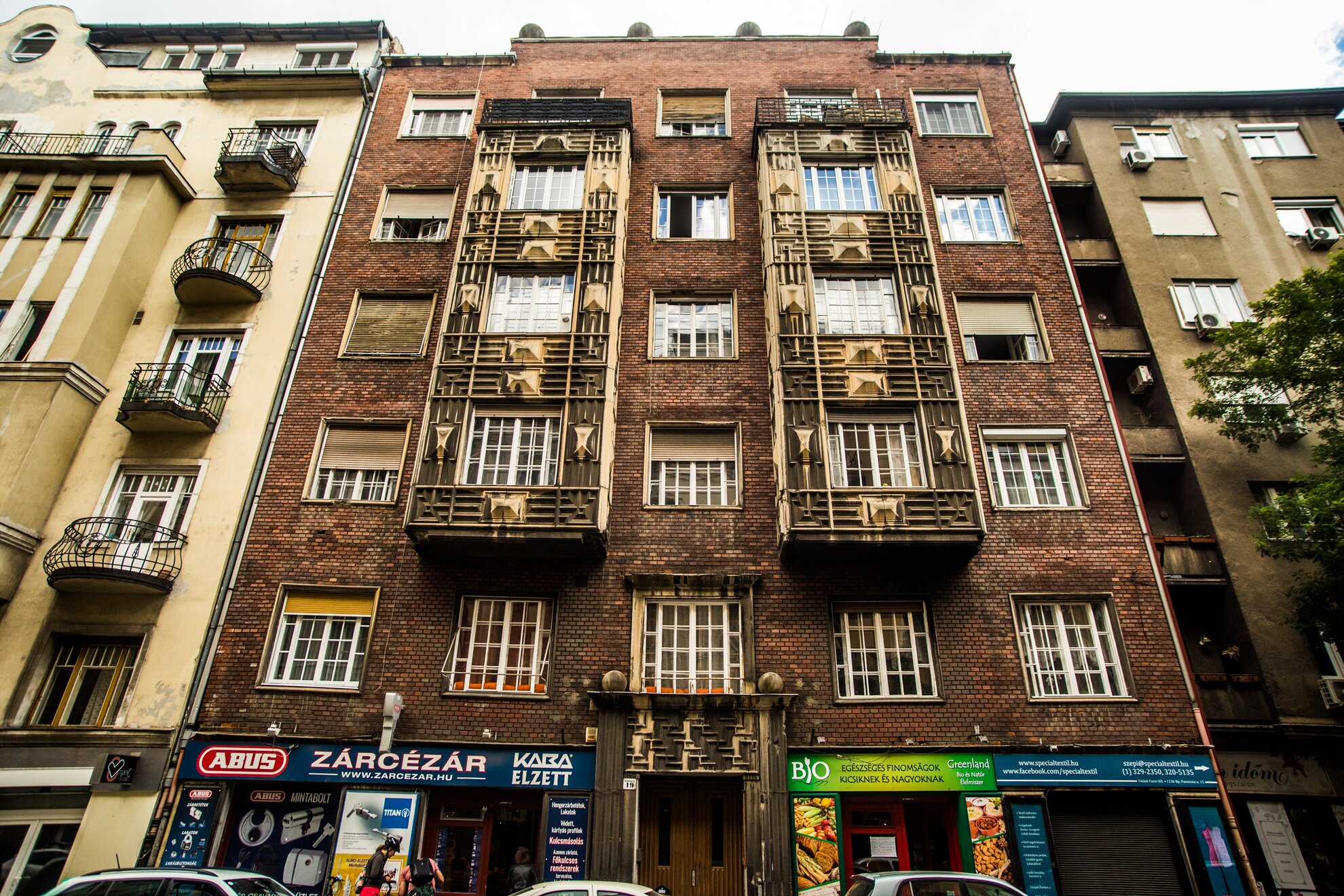
Kiss János altábornagy utca 55–59
This housing estate consisting of U-shaped houses, designed by the lesser-known but still ingenious architect István Medgyaszay, was completed in the second half of the 1920s. It was unusually modern for its time – the one-room apartments each had their own bathrooms.
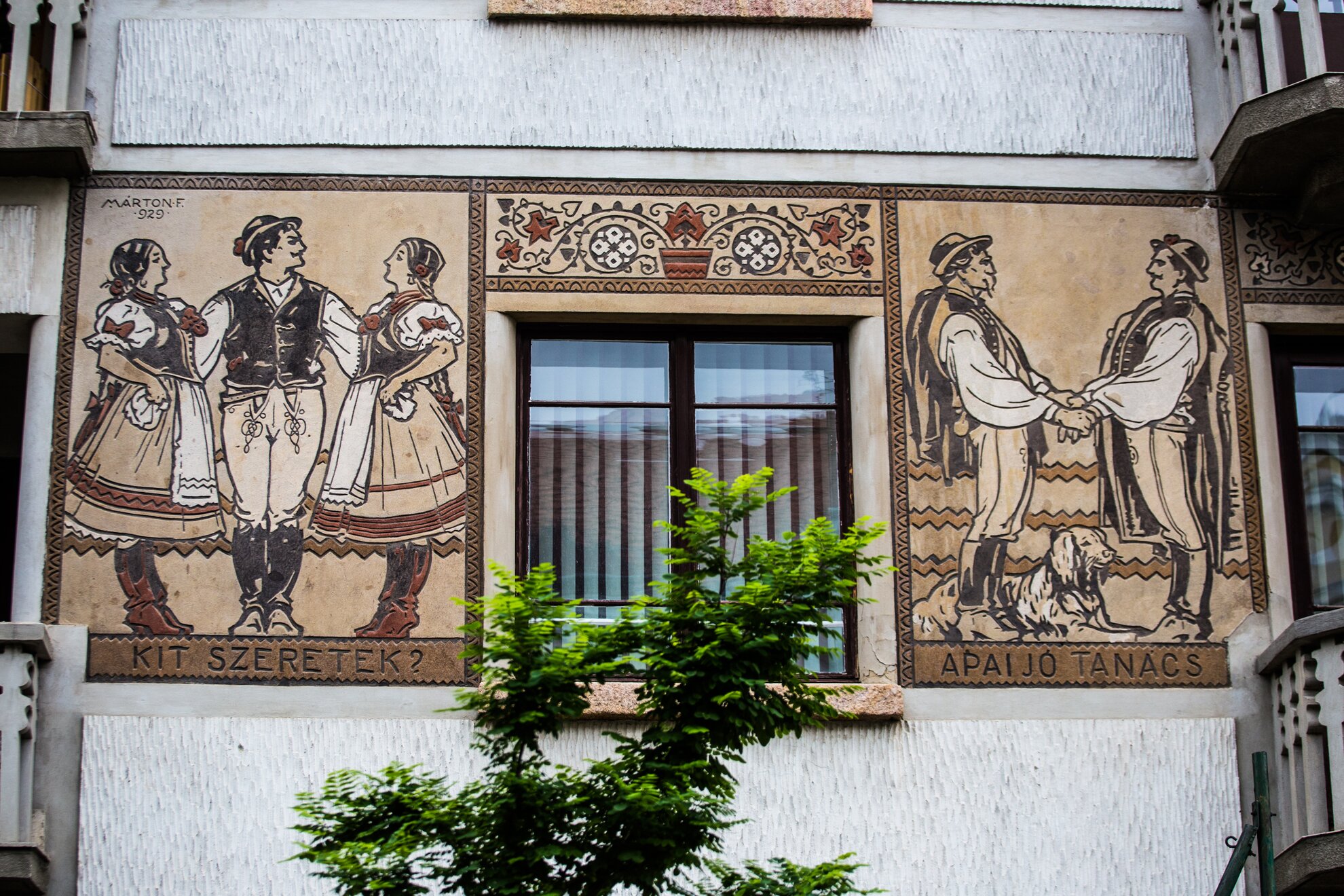
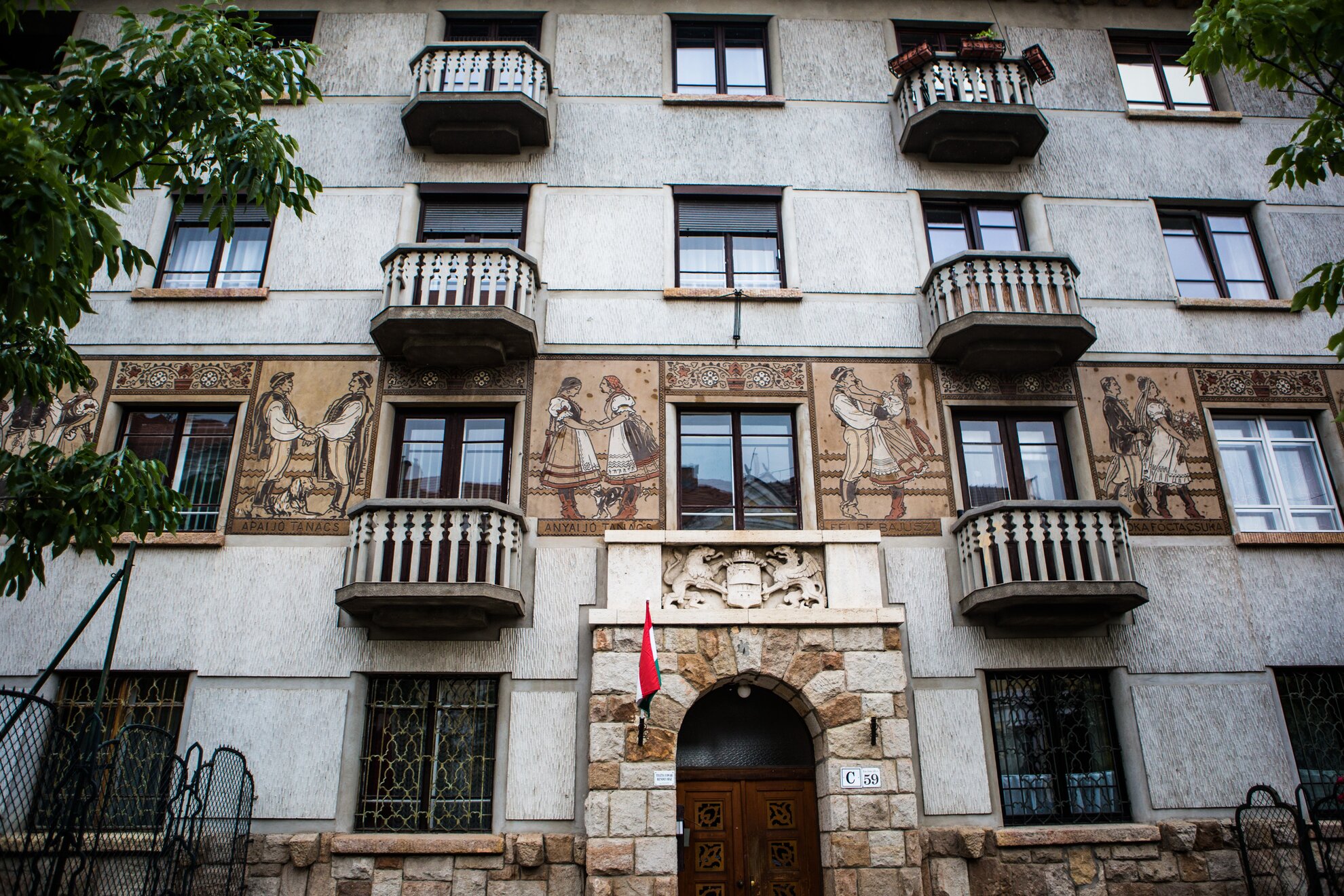
Three of the decorative façades survive to this day, murals showing men and women in folk costumes dancing, gathering food and tending to farm work. House No.55 depicts such scenes of rural work, while No.57 has an exciting deer hunt. House No.59 brings to life several folk sayings in Hungarian.
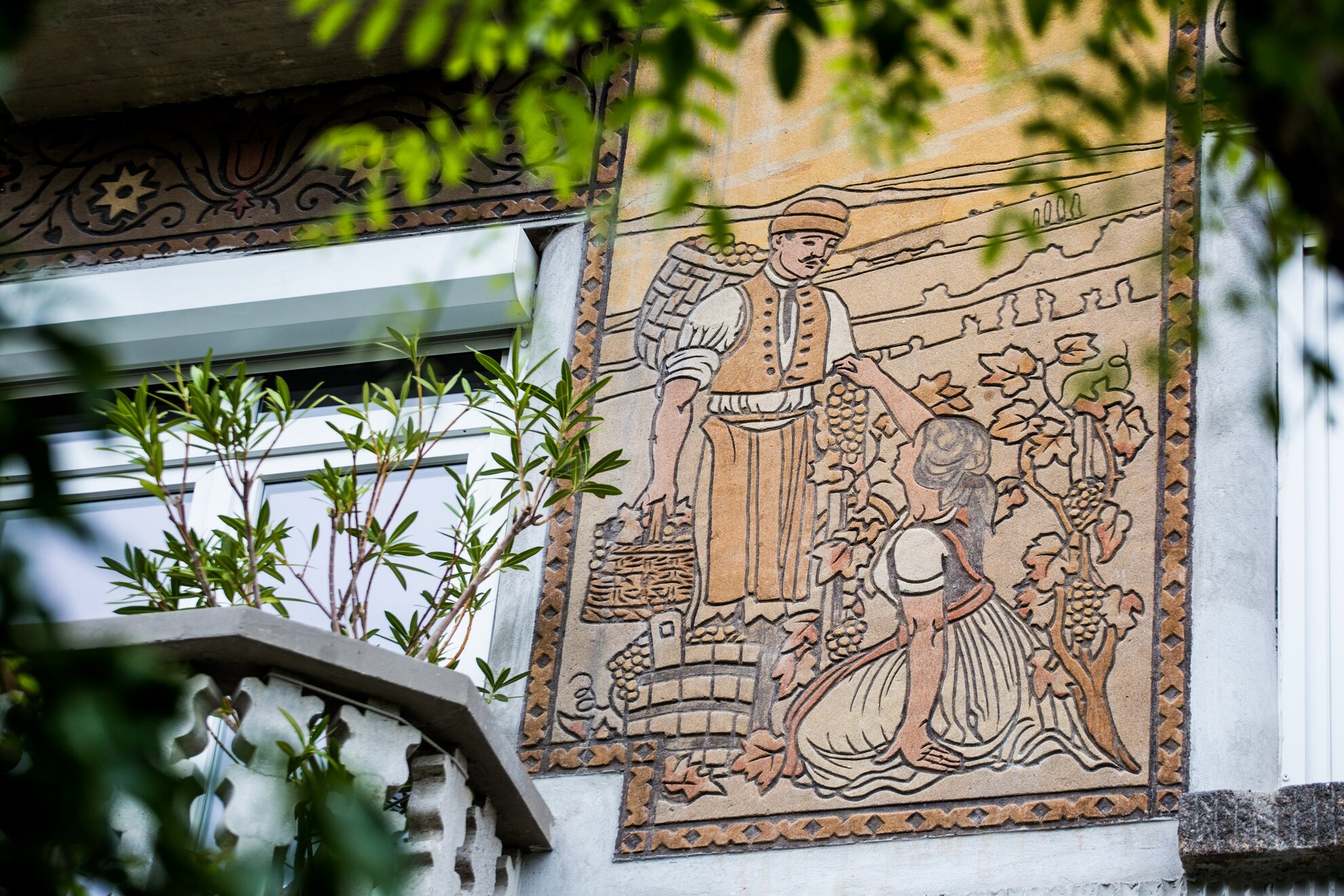
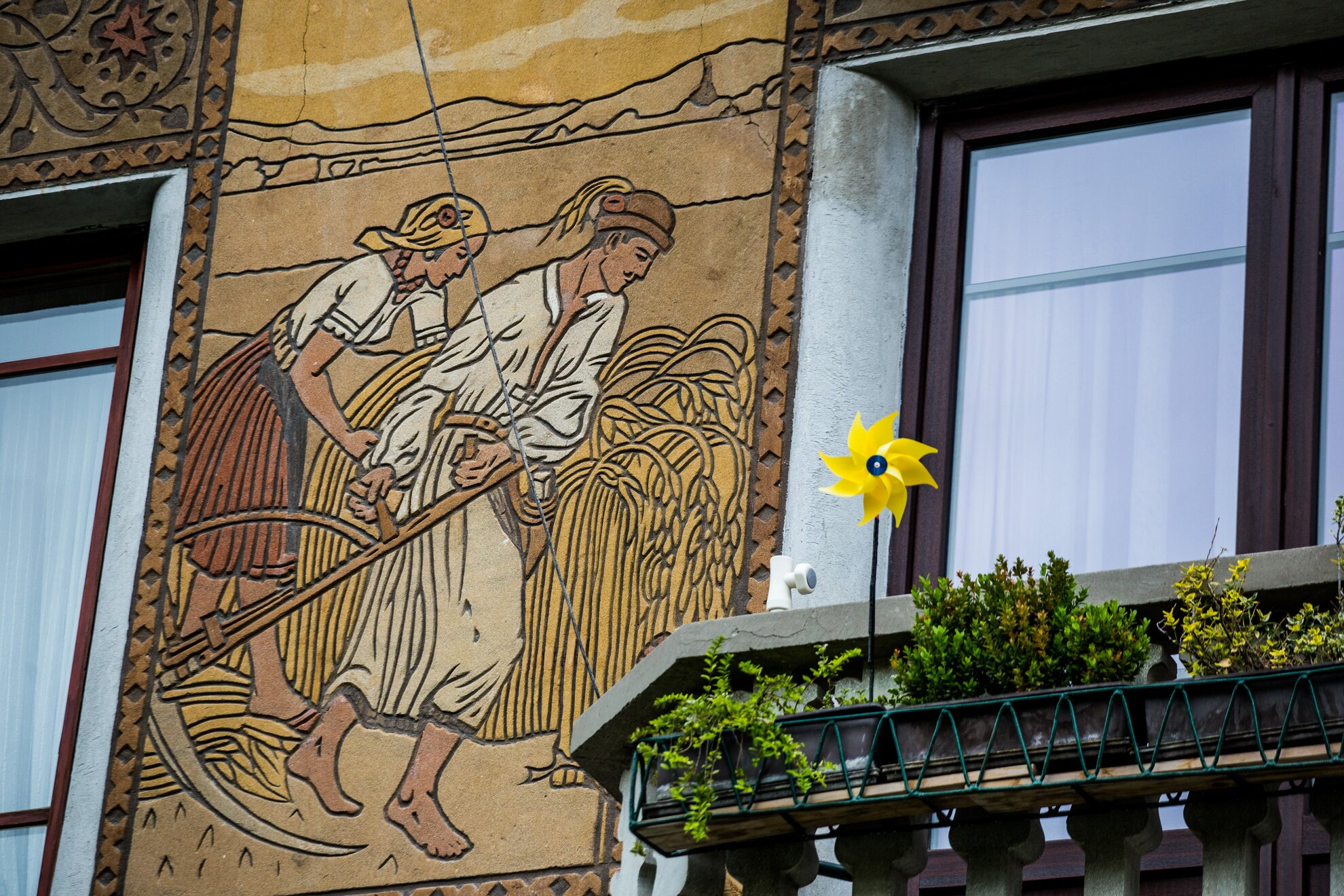
Bercsényi utca 14
Late-modern architecture is on full display on Bercsényi utca, where the striking, wide window frames of Lágymányos give play to the geometric lines of the building’s façade. János Scultéty designed the building, erected in 1963.
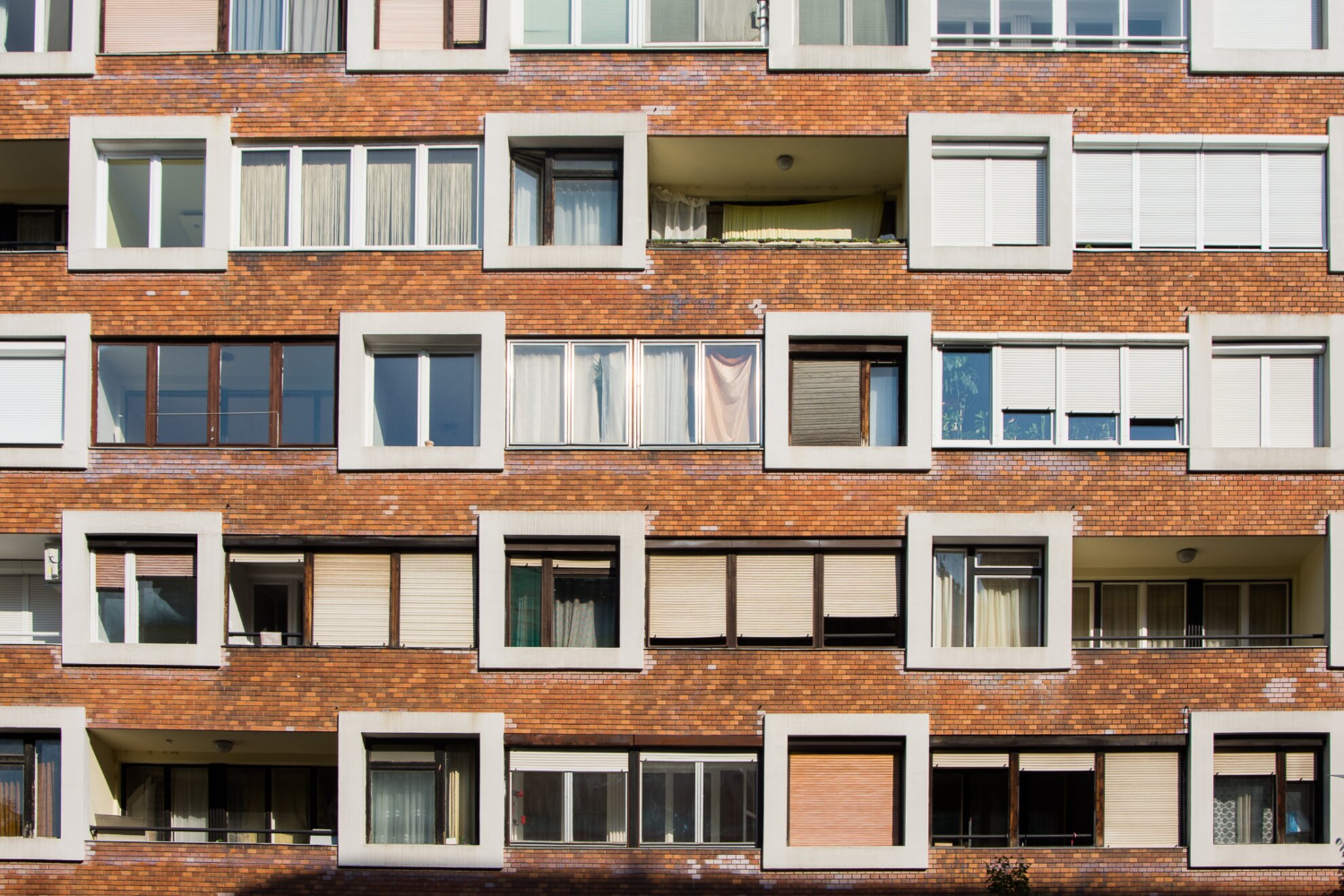
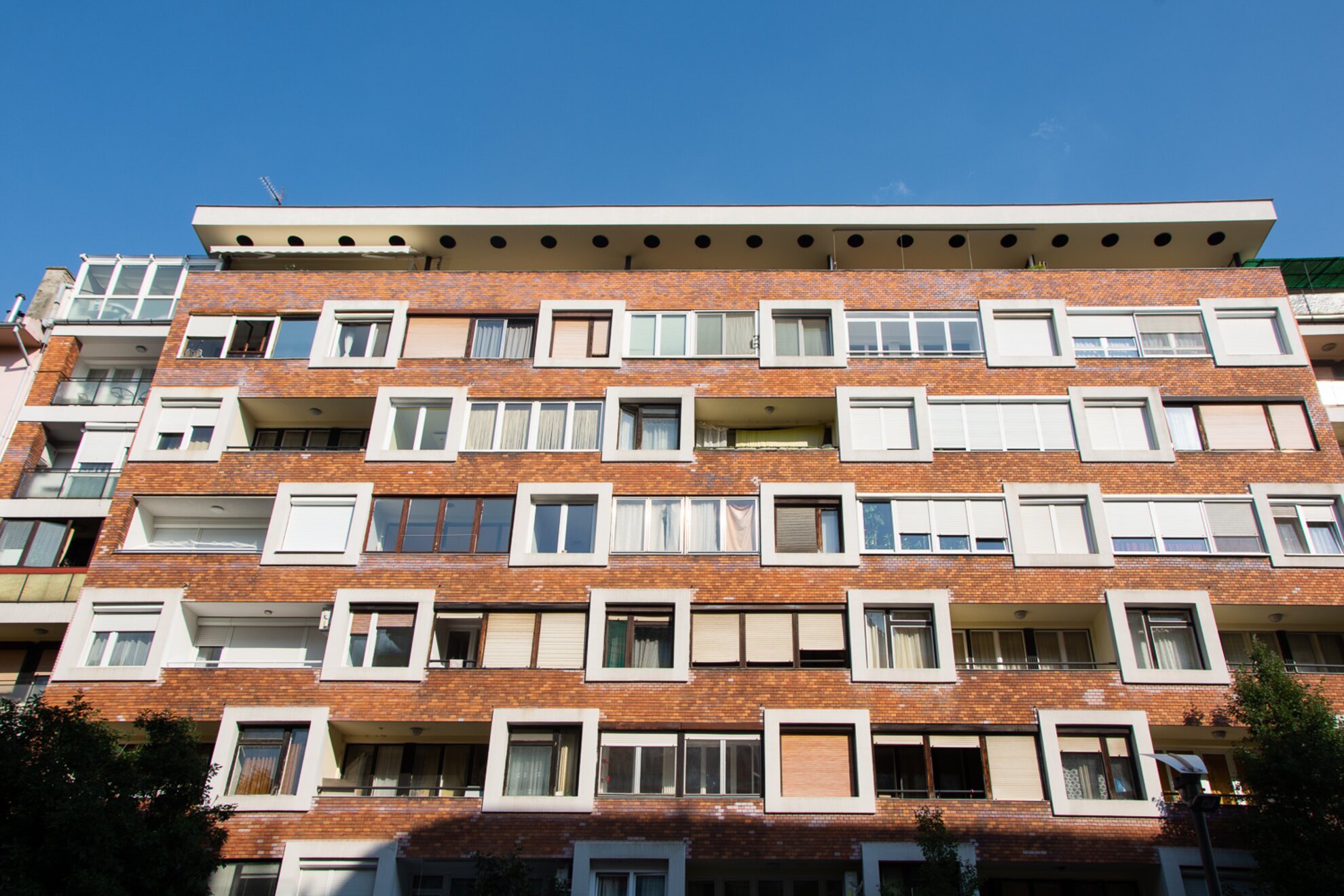
Belgrád rakpart 9
The upper half of this building has a façade completely made of glass, standing along the banks of the Danube like a huge aquarium over the city. The construction was carried out semi-illegally in the early 2000s, and used to be a popular LGBTQ nightclub. Now it stands uninhabited.
